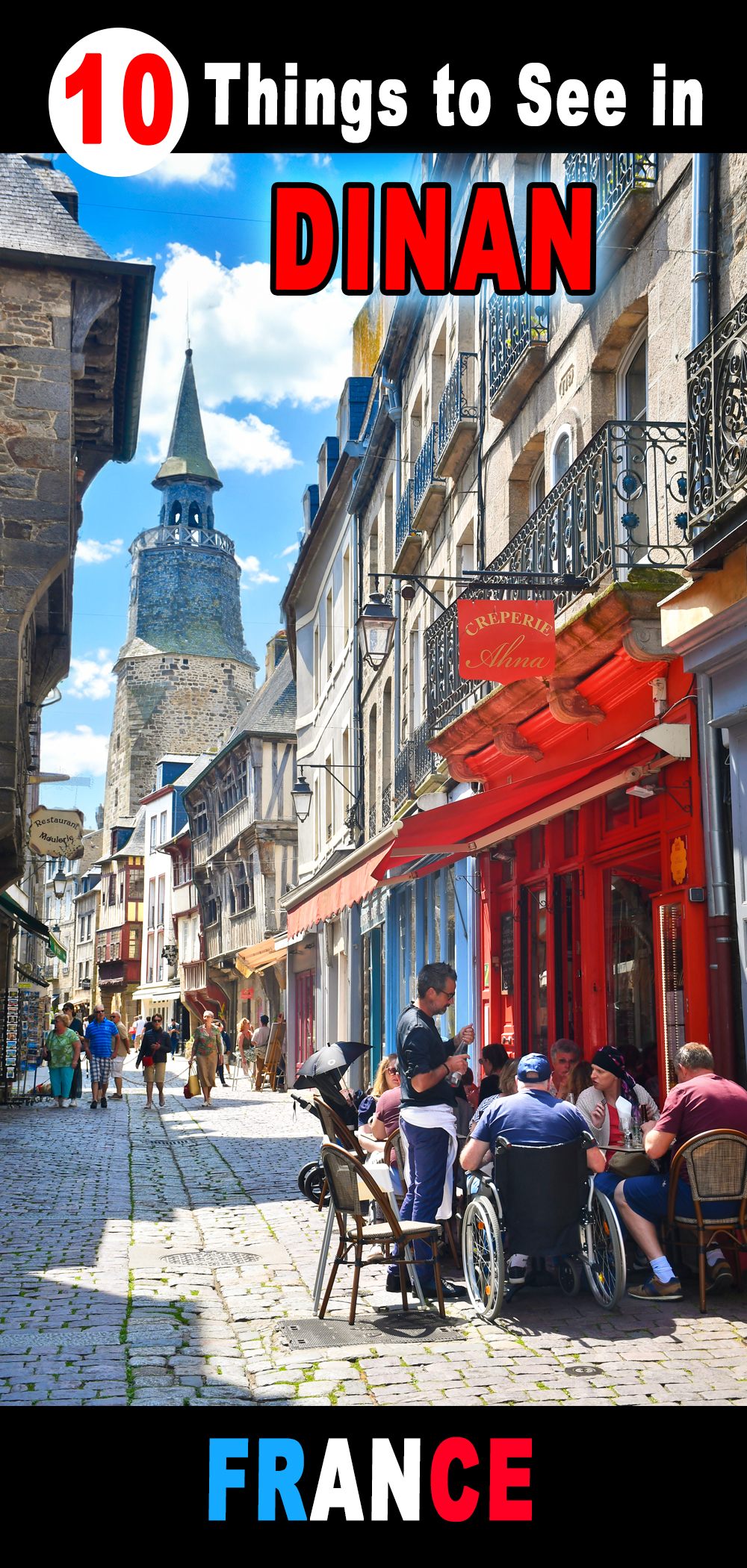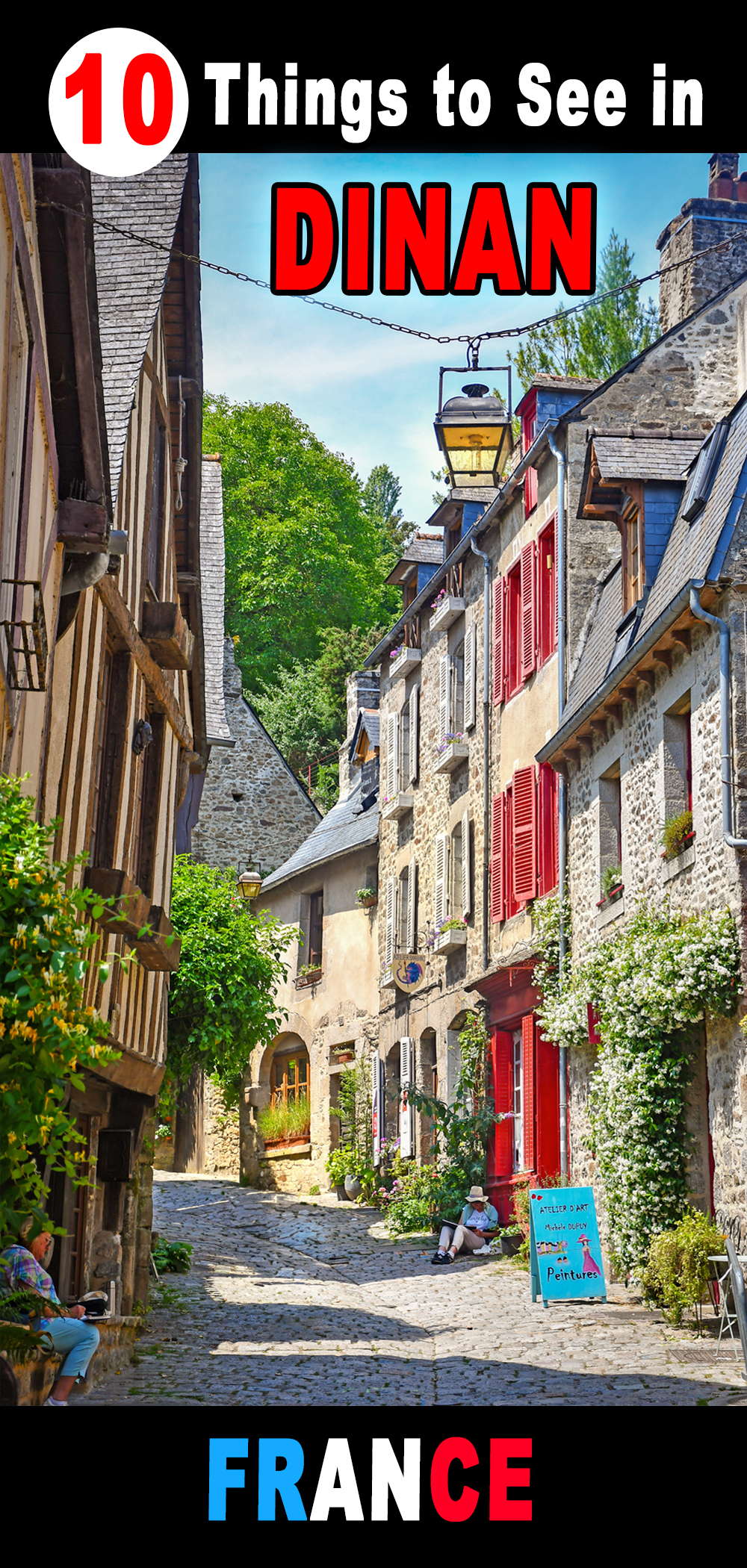Last June, we crossed the Channel by ferry to Saint-Malo. For this first visit to Brittany, we were based in the Dol-de-Bretagne region, halfway between Saint-Malo and Mont-Saint-Michel. Just 30 km away was one of Brittany's most beautiful cities: Dinan! A visit to the historic town was a must. On a beautiful sunny day, we choose to explore Dinan and its landmarks.
🎦 Watch our short video on Dinan, which will make you want to explore this historic town of Brittany ⤵
Before setting off to discover Dinan, I had to do my homework. As I knew very little about the places and sites to see in Dinan, I spent an hour planning my visit. This article is a condensed version of our exploration of the country town, and I hope it will help you when researching what to see in Dinan!
- 🛏 Find the best accommodations in Dinan on Booking.com
- 👩🦱 Join a 1.5 hours immersive guided tour of Dinan led by a professional guide wearing historical outfits [in French]
- 📚 Read the DK Eyewitness Brittany Travel Guide
- 🗺 Download the touristic map of Dinan
- 🚻 Public toilets are located in several locations across the historic town. Check them out on this map.
- 🚗 Park at the entrance to the old medieval centre: many spaces available along the ramparts and Place du Guesclin. Click here for a list of all the car parks.
Explore Dinan in History
To better understand Dinan and its monuments, we must go back to the Middle Ages. Here's a brief overview of historic Breton town:
Dinan in the Middle Ages
During the Middle Ages, Dinan in Brittany was first mentioned in 1040, when Josselin, the founder and first lord of the town, witnessed a donation to the Abbey of Saint-Georges in Rennes.
Josselin's descendants called in the Benedictine monks of Saint-Florent de Saumur and Marmoutier, which led to the appearance of the first church, Saint-Malo, and the priory of la Madeleine-du-Pont in the 11th century.
An ideal situation
Ideally situated on the banks of the River Rance, the town quickly prospered thanks to its dual strategic advantage:
- the port of Dinan established early trade links with England and Flanders, while
- the "vieux-pont" (old bridge) became the only land passage to the estuary, generating tolls and profits.
A Breton market town
In the 12th and 13th centuries, the lords of Dinan governed a rich and dynamic town. The mention of a second parish church, Saint-Sauveur, as early as 1123, bears witness to sustained demographic growth.
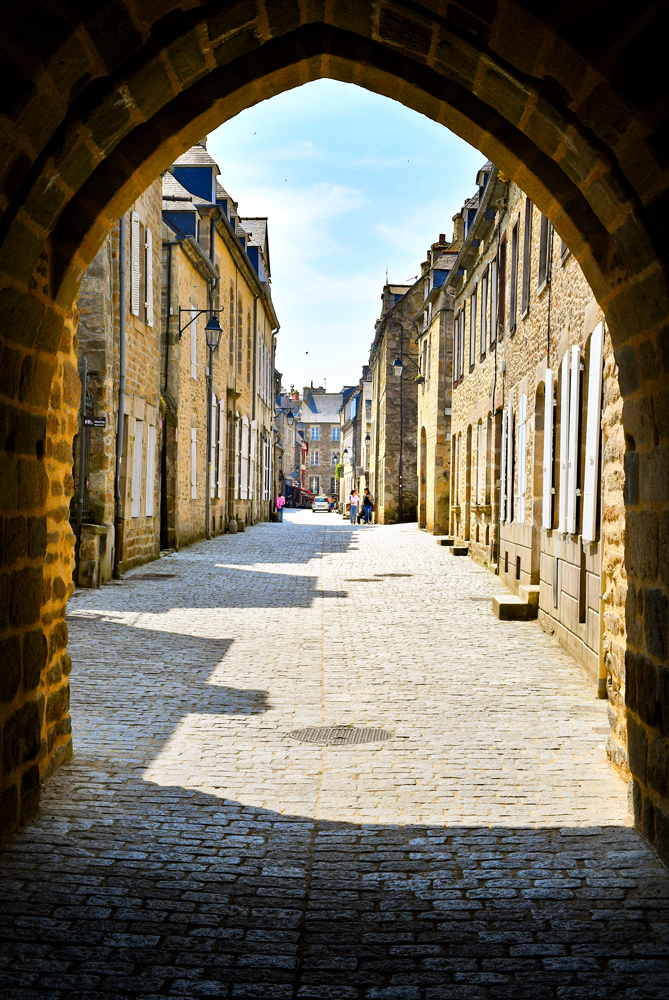
View of Rue de l'Ecole from Porte de Saint-Malo © French Moments
Unsurprisingly, this success soon led to envy, particularly from the Duke of Brittany, John I, who acquired Dinan in 1264. At the end of the 13th century, the town became part of the ducal domain.
Under the authority of the Dukes, Dinan continued to prosper.
In 1319, the vast "Champ aux chevaux", now the Place du Champ and Place du Guesclin, was laid out, giving an idea of the scale of the markets in Dinan, a tradition that continues to this day with the big Thursday market.

Explore Dinan: Place du Guesclin © French Moments
A fortified city
However, with the construction of the city walls, the Dukes of Brittany left their mark on Dinan. With a circumference of around 3 kilometres (2 miles) and comprising four gates and numerous towers, Dinan's ramparts became the largest in Brittany after those of Nantes and Rennes.
Strengthened at the end of the 14th century by the construction of the ducal castle and at the end of the 15th century by imposing artillery towers, the stronghold of Dinan became an essential part of the defence of north-east Brittany.
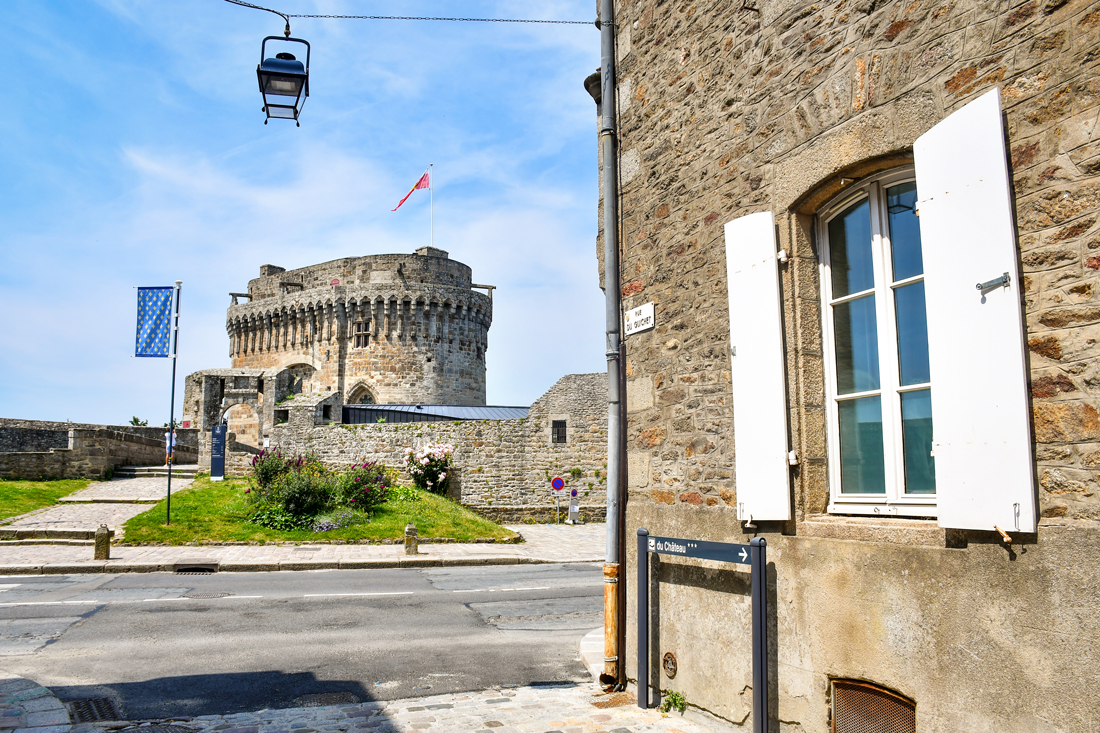
Explore Dinan Castle © French Moments
Dinan during the Early Modern Period
A religious town
Dinan's prosperity in the late Middle Ages made it an important religious centre. From the 13th century onwards, Dominican and Franciscan convents were established in the town, soon to be joined by the Trinitarians and the Poor Clares.

Entrance to the former Cordeliers Monastery © French Moments
During the second half of the 15th century, major reconstruction work began on the parish churches, with the new construction of the church of Saint-Malo and a vast rebuilding project for Saint-Sauveur.
Although the Wars of Religion in the 16th century slowed down this work, as did the final modernisation of the ramparts, the Catholic Counter-Reformation of the 17th century saw the installation of four new conventual establishments: the Ursulines, the Capuchins, the Dominicans and the Benedictines.
At the time of the Revolution, a third of the land within the city walls belonged to the clergy.
A prosperous town
Until the end of the 17th century, Dinan's prosperity was based on the production and trade of cloth, first to Northern Europe and then, after the wars of Louis XIV, to Spain and the American colonies.
From the 15th century onwards, the Clock Tower reflected the economic success of the Dinan bourgeoisie. The belfry symbolised municipal power that rivalled the duke's keep and the steeples of the clergy.
The many timber-framed houses in the historic centre bear witness to this prosperity. These dwellings constructed between the 16th and 18th centuries housed the nobility and wealthy bourgeoisie. In the 18th century, fashion changed to hôtels particuliers, stone mansions that the aristocracy edified to the south of the town (rue Waldeck Rousseau, rue Léhon, etc.)
![Dinan History 01 Explore Dinan [Public Domain via Wikimedia Commons]](https://frenchmoments.eu/wp-content/uploads/2023/07/Dinan-History-01-scaled.jpg)
Place des Cordeliers in the past [Public Domain via Wikimedia Commons]
Dinan during the Early Modern Period
During the 19th century, Dinan underwent major transformations while at the same time weathering the Revolution relatively peacefully.
A Town that grew beyond its Ramparts
The confiscated former convents became the site of the first textile factories, which, along with the port, became the town's main economic activity until 1860. By this time, Dinan felt cramped within its ancient ramparts.
As early as 1781, the construction of the Grand-chemin, known today as the rue du Général De Gaulle, shifted some of the traffic southwards, leading to the first dismantling of the town walls.
In 1852, the inauguration of the Viaduct definitively relegated the old rue du Jerzual to the past, while the arrival of the railway in 1879 brought Dinan into the modern communications network.
![Dinan History 02 Explore Dinan [Public Domain via Wikimedia Commons]](https://frenchmoments.eu/wp-content/uploads/2023/07/Dinan-History-02.jpg)
Explore Dinan in the past [Public Domain via Wikimedia Commons]
A Service-oriented Town
By the end of the 19th century, Dinan had become a service-oriented town. The textile factories and commercial activities gave way to the first tourists, notably the English, who contributed to the formation of the "British colony" and the military, hussars and dragoons, whose regiments were stationed at Beaumanoir and Duguesclin.
During this period, the destruction of the Brest Gate in 1881 underlined the heritage value of Dinan's ramparts, which were classified as Historical Monuments in 1886, thus raising public awareness.
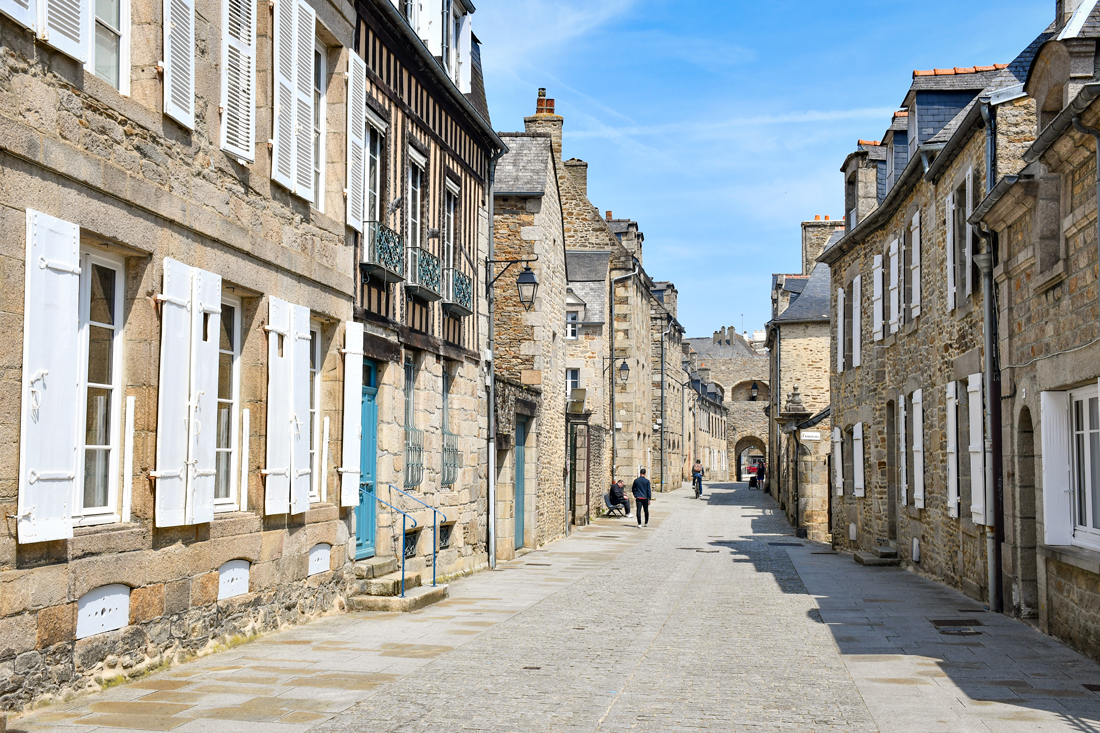
Explore Dinan - Rue de l'école © French Moments
Dinan in the 20th century
Over the 20th century, Dinan developed into the town it is today. The city continued to grow, and the 1930s saw the construction of public buildings in the neo-Breton style, strongly influenced by Ar Seiz Breur, such as the railway station, post office, Caisse d’épargne (savings bank), etc.
At the same time, the town's tourist character grew more popular. After the war, with strong demographic growth, new districts emerged to the city's northeast, gradually transforming the farms and fields while preserving a human scale and landscape, an avant-garde approach for the 1960s.
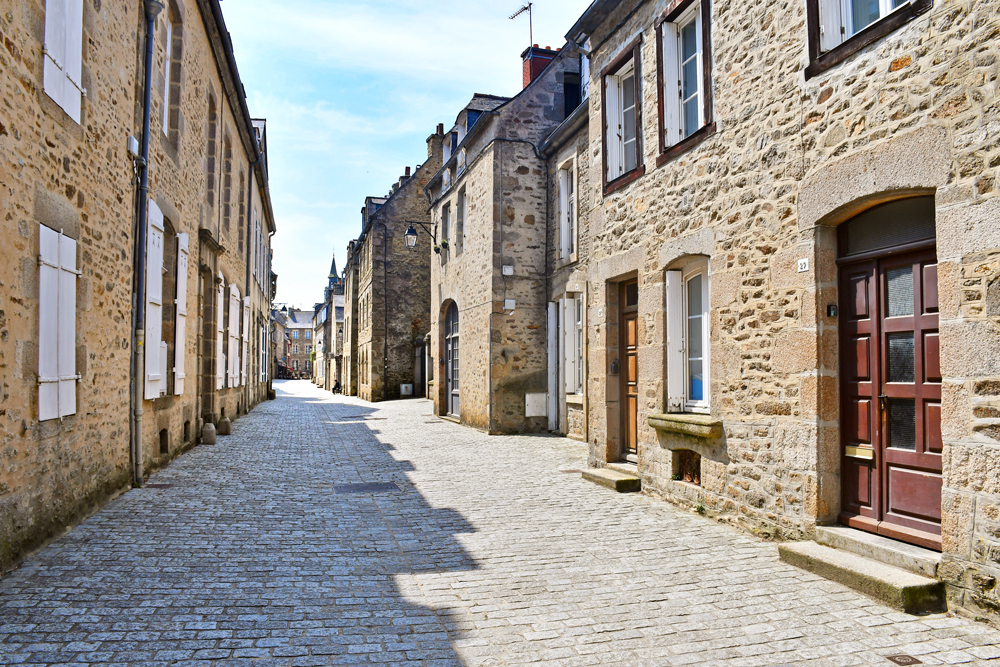
Explore Dinan - Rue de l'école © French Moments
Dinan is a key player in Brittany's cultural and tourist scene today. Since 1985, it has been recognised as a town of art and history and is home to one of the largest protected areas in France. The city, a source of inspiration for many artists and designers, has harmoniously blended its past riches with its present dynamism.
Book your accommodation in Dinan 🛌
Finding the perfect accommodation in Dinan is essential to make the most of your visit.
Whether you prefer a charming guesthouse, a cosy bed and breakfast, or a comfortable hotel, our partner Booking.com offers a wide range of options to suit every traveller's needs.
From the heart of the historic centre to the serene outskirts, you can browse through their extensive selection and easily book your ideal stay.
For a helpful visual reference, you can also check out the map of Dinan with highlighted accommodation locations provided by our partner:
Explore Dinan in 10 Landmarks
To make your visit easier, I've selected ten tourist attractions to explore in Dinan.
Dinan Castle
(Château de Dinan)
Dinan Castle is an old fortified castle dating from the 14th century, which replaced an ancient fortress and was remodelled several times. It was built at the request of Jean IV, Duke of Brittany, to assert his power over a town that was hostile to him. In this way, Dinan castle rivalled the royal castle of Vincennes, the residence of Charles V, King of France.

Explore Dinan Castle © French Moments
Dinan Castle is a real palace-tower, with all the rooms needed for court life: kitchen, banqueting hall, ceremonial room and chapel.
You will find this emblematic monument of Dinan south of the town. It is the town's most visited monument and the second most visited castle in the Côtes-d'Armor département after the Fort la Latte. The exhibition is organised around two themes:
- the art of War and
- the daily life in a princely residence.
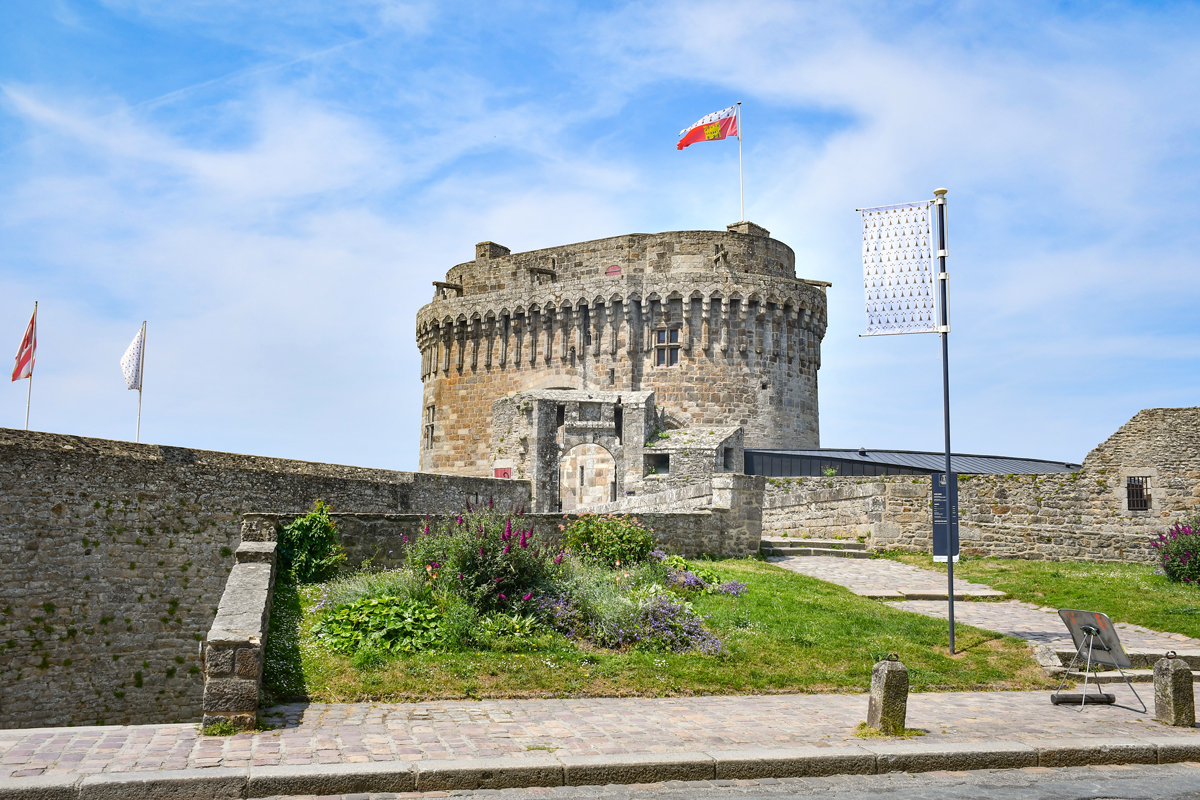
Explore Dinan Castle © French Moments
Ramparts
(Remparts)
The ramparts of Dinan were built between the 13th and 16 centuries. Today, they are among the largest and best preserved in France.
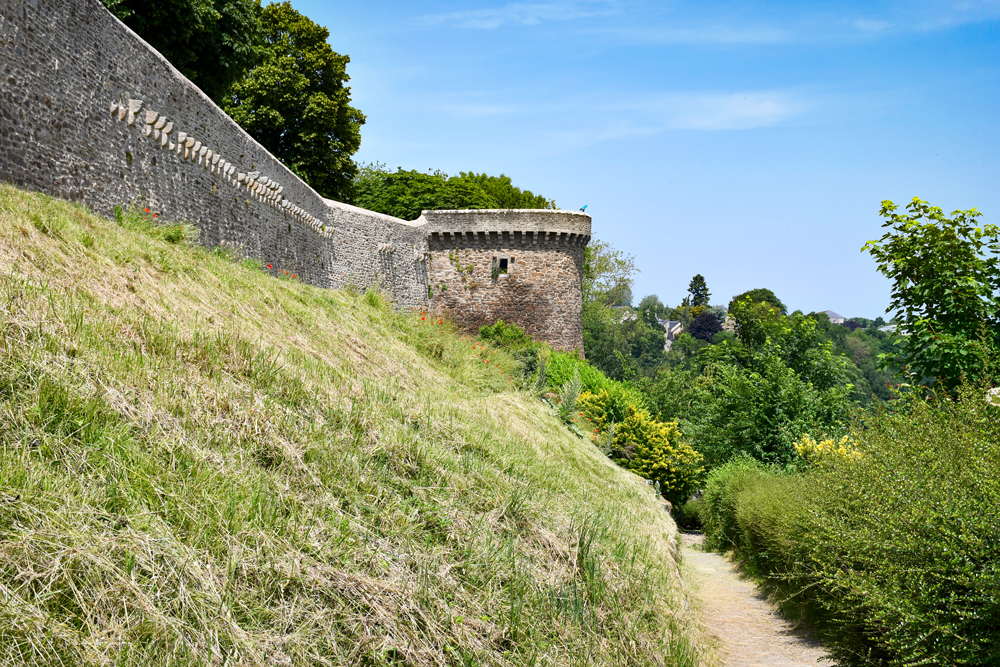
Saint-Catherine Tower © French Moments
With 2.7 km (1.7 mi) of curtain walls, four fortified gates and nine towers, the city walls are a popular stroll for Dinan residents and tourists alike, providing an opportunity to discover almost four centuries of military architecture.
You'll surely catch a glimpse of the ramparts as you enter the historic city. The most impressive city gates are :
- Saint-Malo Gate
- Jerzual Gate
- Saint-Louis Gate
- Guichet gate

Explore Dinan: Saint-Malo Gate © French Moments
Dinan has embarked on a major restoration programme. By December 2024, the municipality will completely restore 500 metres of the medieval wall's northern front between the Saint-Malo gate and the Beaumanoir tower. At the same time, the chemin de ronde will be open to the public.
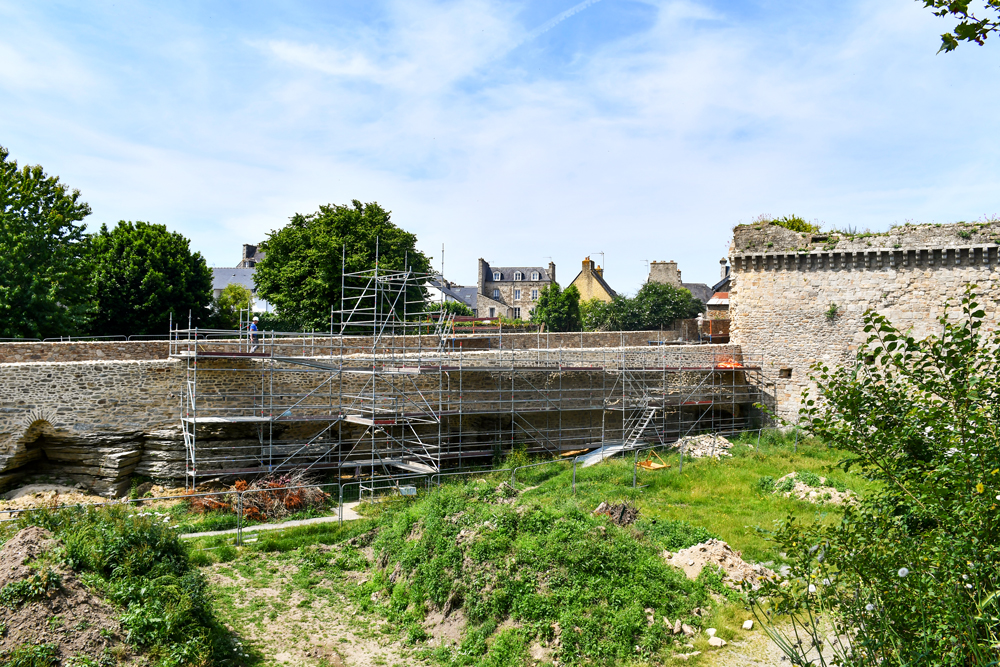
The restoration of the ramparts in June 2023 © French Moments
A walking tour of the ramparts takes approx. 2 hours and 3 km / 2 mi.
Clock Tower
(Tour de l'Horloge)
The lofty Clock Tower towers above the old half-timbered houses built at its foot.

Rue de l'horloge and the clock tower © French Moments
Dinan's notables commissioned the Clock Tower construction at the end of the 15th century. The base of the building is 8 metres square, and from the 4th floor upwards, it becomes octagonal.
The tower testifies to the power of the Dinan bourgeoisie, who wanted to emancipate themselves from ducal influence at the end of the Middle Ages. Raised in the historic town's centre, it is higher than the ducal keep further south.
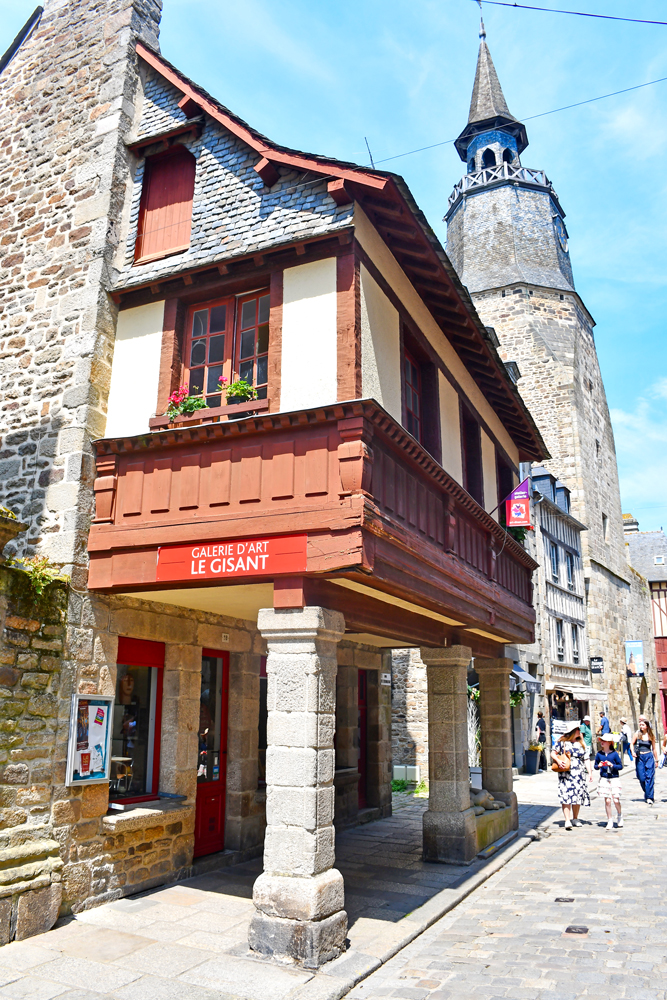
Gisant House in Rue de l'Horloge © French Moments
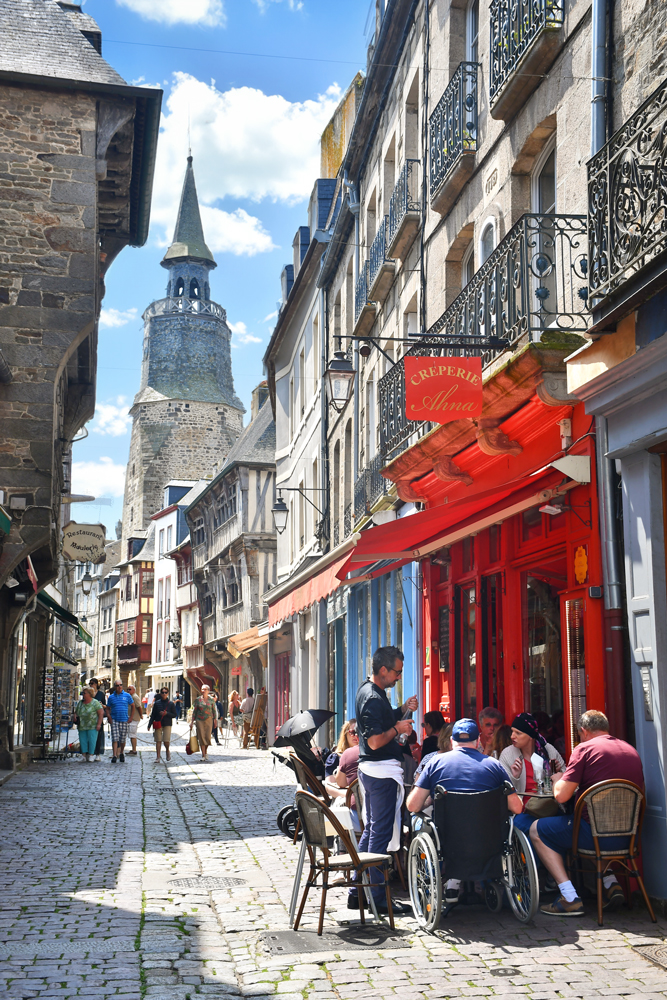
Clock Tower and Rue de l'Horloge © French Moments
Duchess Anne of Brittany elevated it to the status of a belfry, allowing the installation of a bell in 1507. The clock still strikes every quarter-hour, half-hour and hour.
Until the French Revolution, the tower was used for municipal meetings and as a lookout post thanks to its panoramic platform.
The top of the tower
The tower is 43 metres high and has a gabled roof topped by a spire clad in Sizun slate.
The Clock Tower is open to the public, and you can climb to the top (approximately 150 steps).
A stone staircase leads to the first platform. A spiral staircase followed by a miller's ladder lead up to the covered walkway, which runs around the tower's roof.
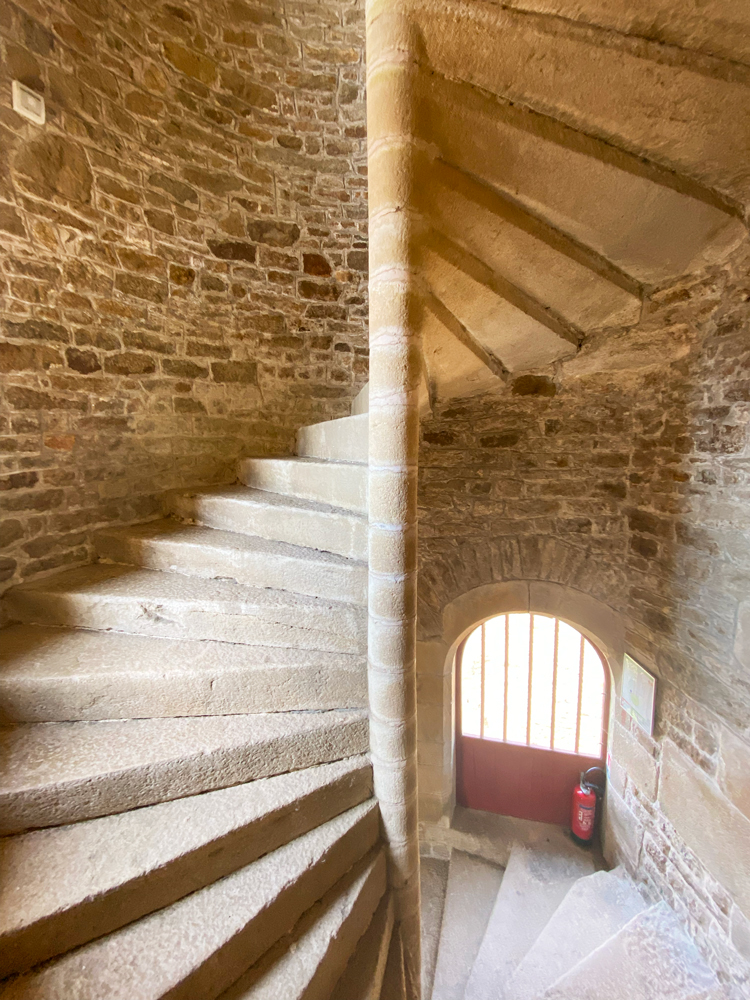
The spiral staircase © French Moments
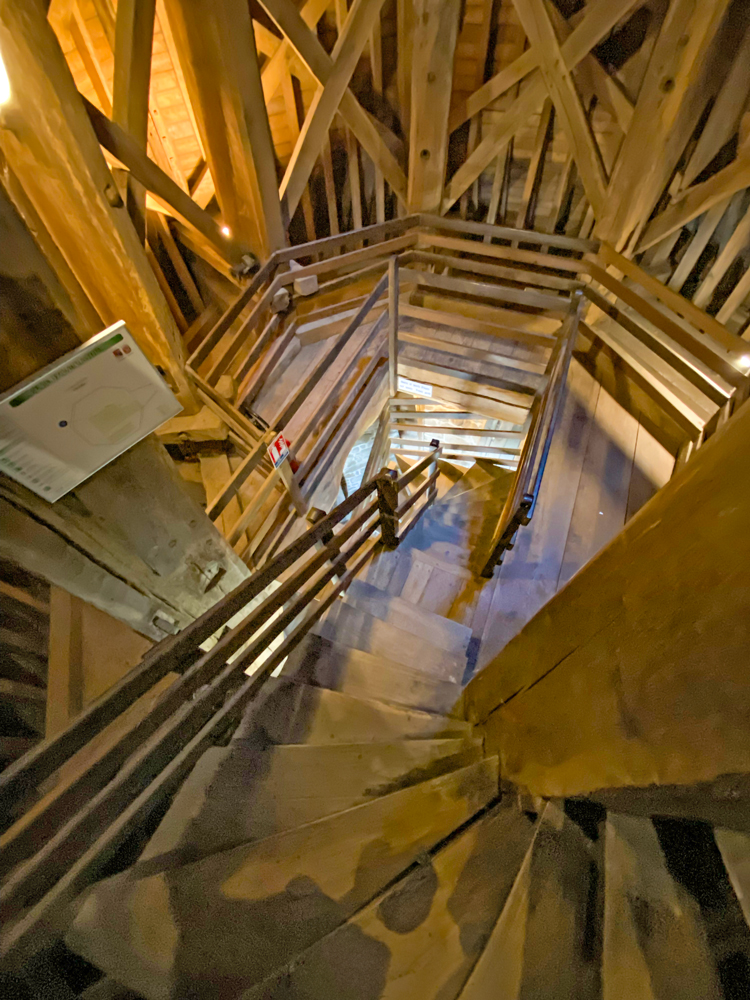
The wooden staircase © French Moments
At the top, the circular platform offers a panoramic view of the town of Dinan and its main monuments: the Saint-Sauveur basilica, Saint-Malo Church, Dinan Castle, the ramparts and the rooftops of the historic centre.

The Saint-Sauveur Basilica © French Moments

The view from the top of the clock tower © French Moments

Sainte-Catherine Chapel © French Moments
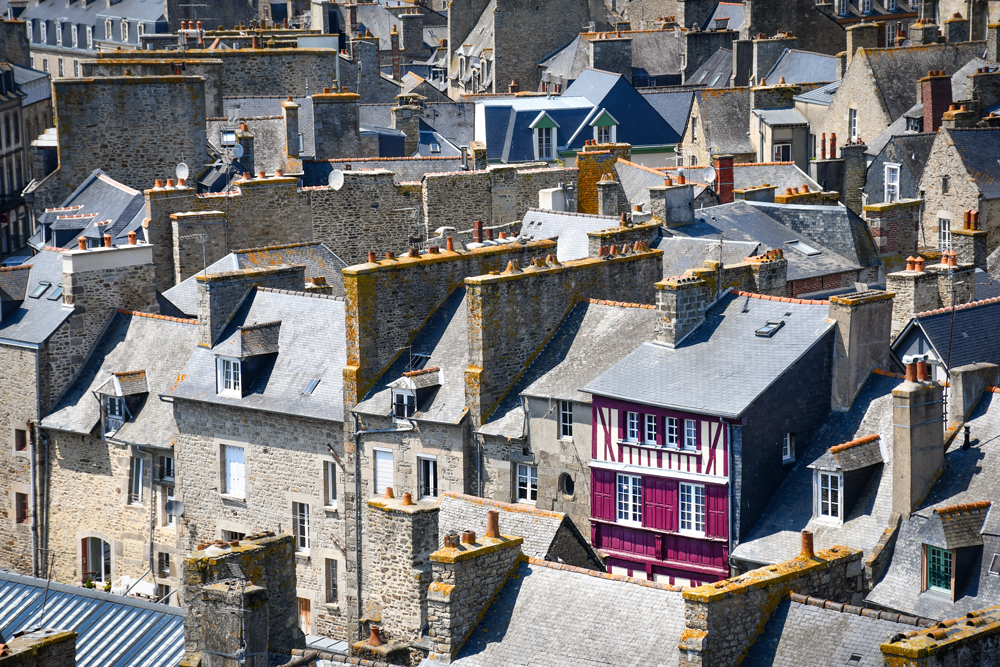
The rooftops of Dinan © French Moments
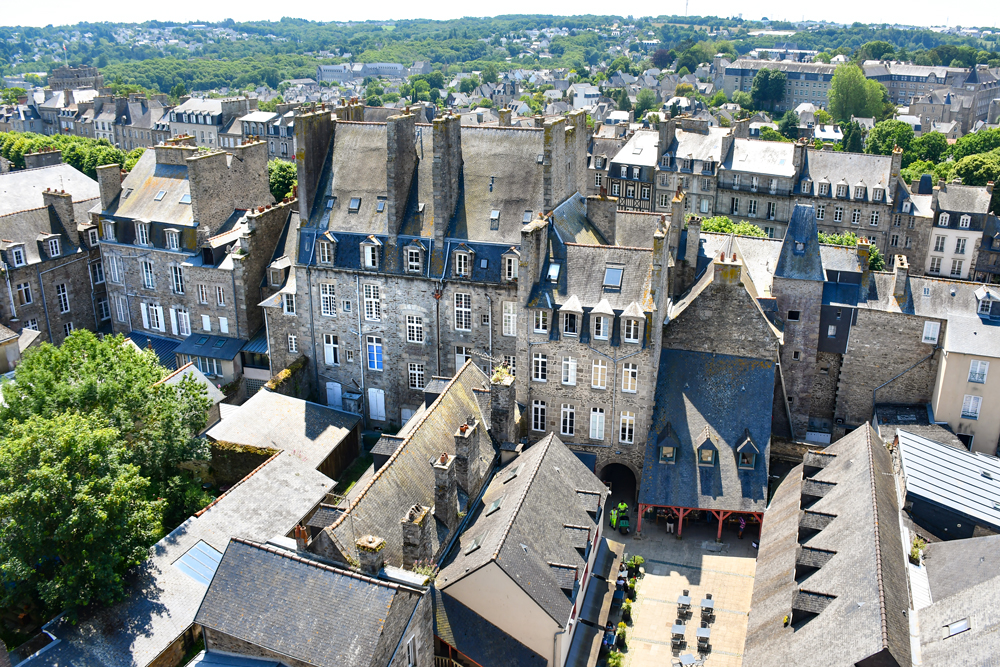
The rooftops of Dinan © French Moments

The castle of Dinan © French Moments
Saint-Malo Church
(Église Saint-Malo)
The church of Saint-Malo is a 15th-century example of the flamboyant Gothic style in Brittany.

Saint-Malo church © French Moments
A old and a new Church
As far back as the 11th century, Dinan had a church dedicated to Saint-Malo, which was not in the exact location of the present building. It was outside the walls. Towards the end of the 15th century, France wanted to bring Brittany under its authority. The people of Dinan feared that the church would serve as a stronghold for the French during a siege. In 1487, François II, Duke of Brittany, ordered the church of Saint-Malo to be demolished and rebuilt within the walls.

Explore Dinan - the nave of Saint-Malo church © French Moments
An unfinished Church
Construction of the new church began in 1490, and as Dinan was a prosperous town, donations poured in. The sanctuary, built from the granite stone typical of Brittany, would be flamboyant Gothic.
However, funding sources eventually dried up in the 16th century, when the Reformation was in full swing. Despite a donation from François I, it was not until the 17th century that the choir and transept were fully vaulted and completed. The nave remained unfinished for almost four centuries.
During the French Revolution, the disused church was used as a corn exchange, shop, auditorium and barracks. The church was returned to worship in 1803 in a deplorable state. The State restored the church and rebuilt the nave between 1855 and 1865 based on available plans and the architectural elements of the choir.
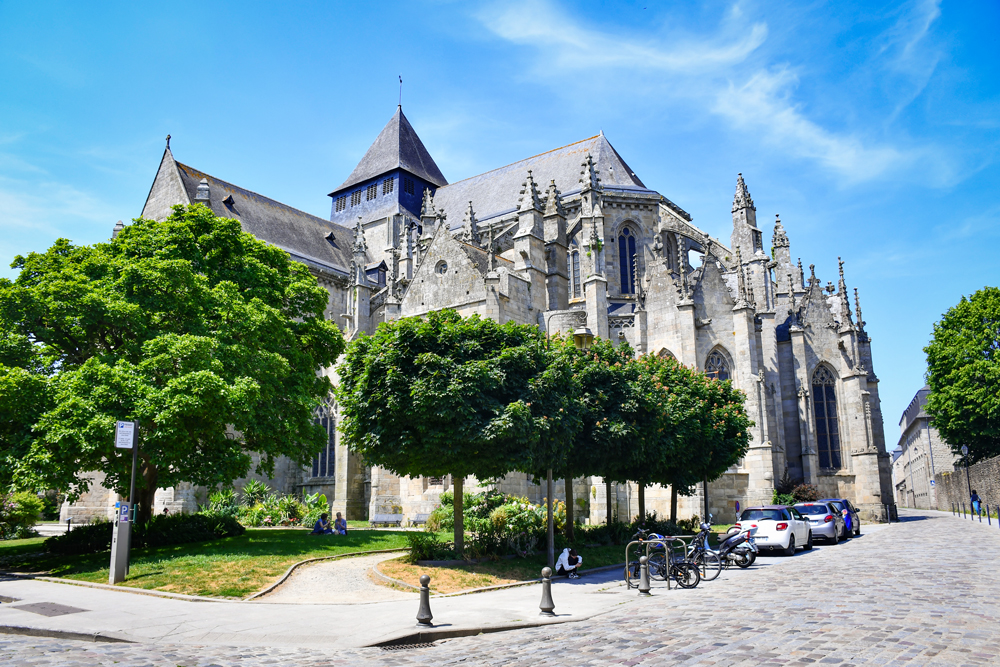
The chevet of Saint-Malo church, Dinan © French Moments
Two things to see in the Church
Saint-Malo church is well worth a visit for :
- The exterior of the chevet, with its forest of pinnacles, finials, kale and gargoyles. It is a forest of granite stone in typical Breton style.
- The 1920s stained glass windows illustrate several episodes in the history of Dinan, including Anne of Brittany's entry into the town in 1505.
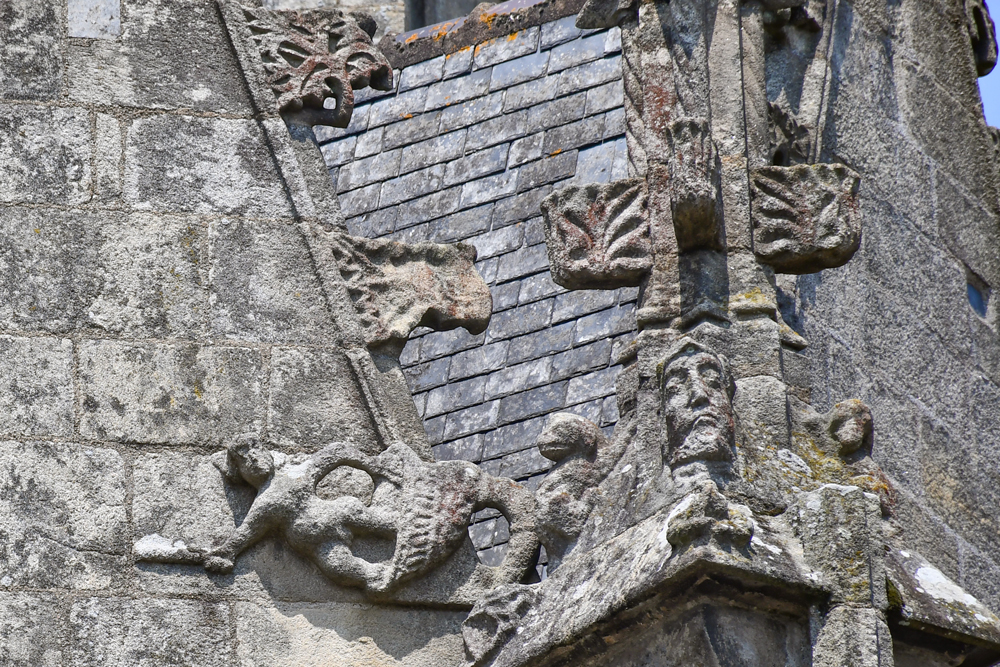
Detail of the chevet and its stone sculptures © French Moments
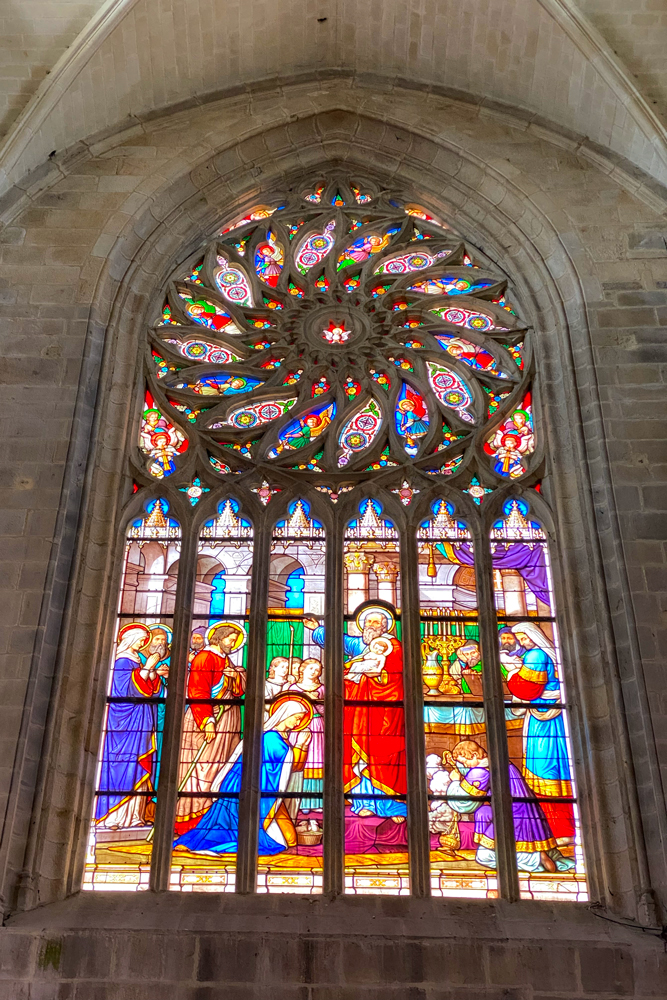
Stained-glass windows in Saint-Malo church © French Moments
Learn more about the history and architecture of Saint-Malo Church on Patrimoine-Histoire [in French].
Half-timbered houses
(maisons à pans de bois)
The upper town of Dinan is home to around 115 timber-framed houses. These are either corbelled or porch houses. Today, many timber-framed houses have become shops or restaurants.
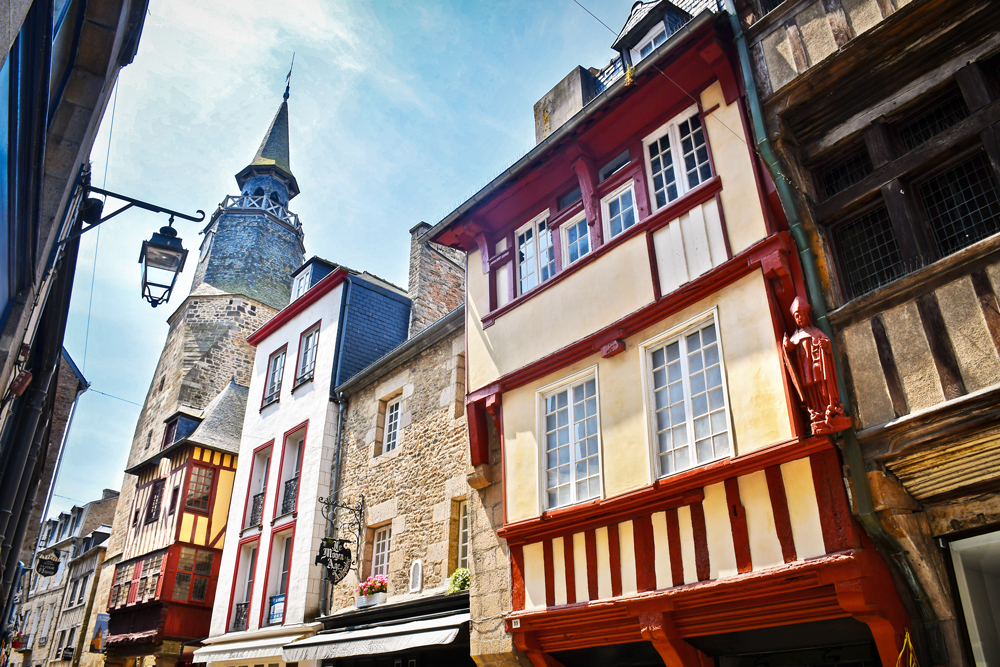
Explore Dinan: Rue de l'Horloge © French Moments
Contrary to popular belief, Dinan's timber-framed houses do not date back to the Middle Ages. The exception is the famous Maison de la Mère Pourcel on Place des Cordeliers, which dates from the late 15th century.
Most timber-framed houses have been successfully remodelled and date from the 16th or 17th centuries.
Each timber frame is 35 to 40 cm wide. Priority was given to the solidity and robustness of the structure, which was built level by level.
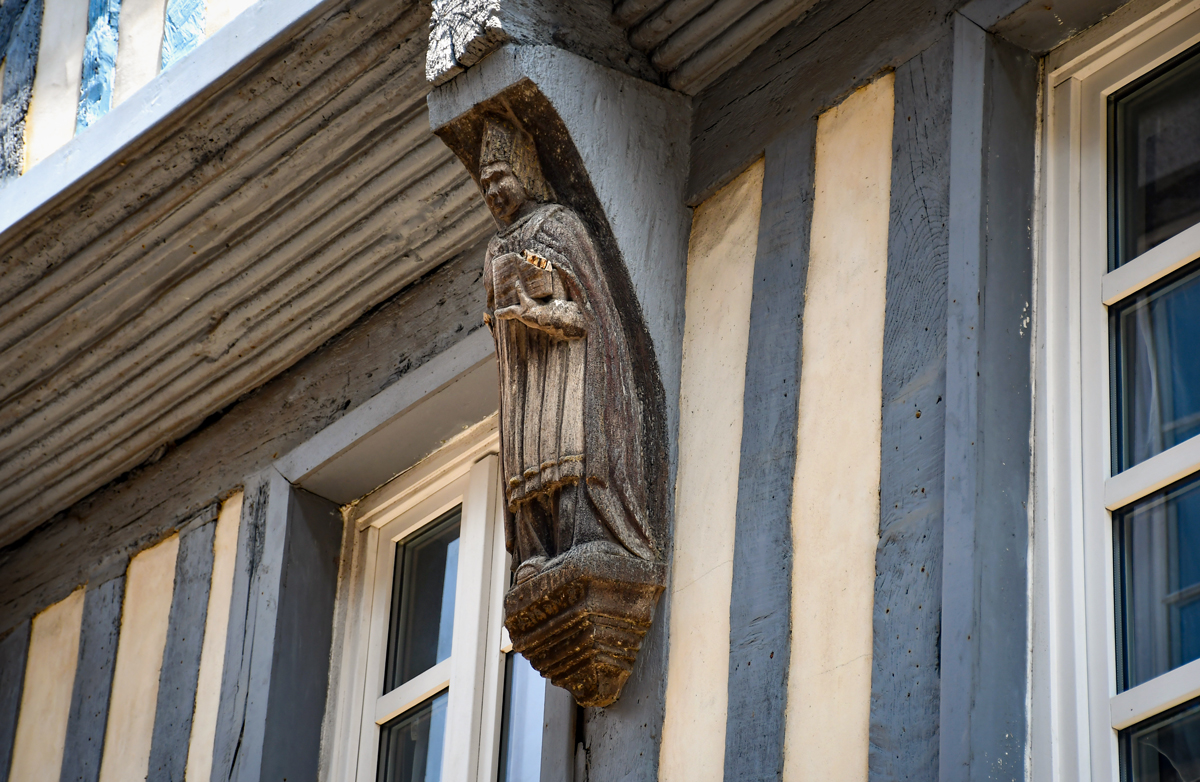
Detail of a half-timbered house in Dinan © French Moments
How Dinan saved its half-timbered houses
In France's historic towns and cities in the 19th century, the authorities demolished many half-timbered houses that were getting in the way of urban development plans. Dinan has a superb heritage, with more than 115 listed houses, because it was poor and unable to modernise all its timber-framed dwellings at the time.

Half-timbered house in Rue de la Lardrerie © French Moments
To admire Dinan's most beautiful timber-framed houses, take the following streets: rue de l'Horloge, place des Cordeliers, rue du Petit Fort and rue du Jerzual (see below).

Explore Dinan: Rue du Jerzual © French Moments
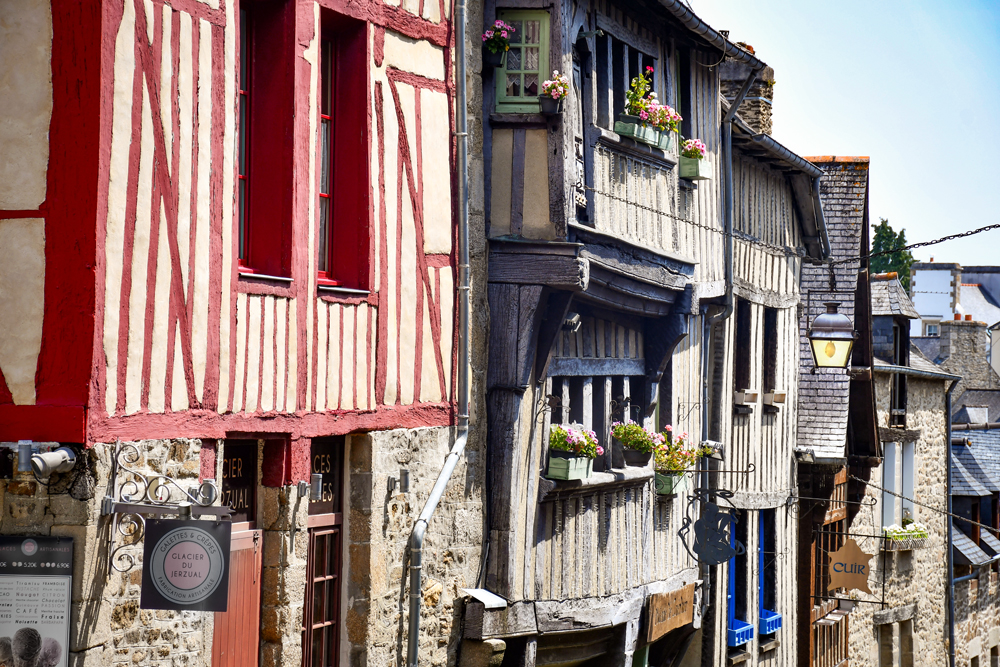
Explore Dinan - Rue du Jerzual © French Moments
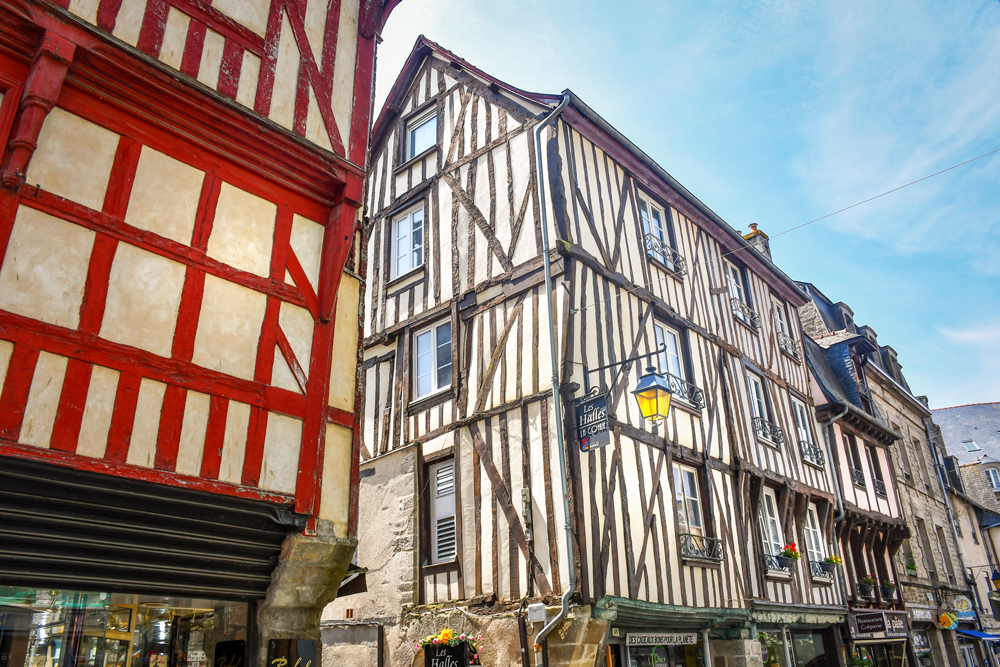
Half-timbered houses in Dinan © French Moments
Maison de la Harpe Celtique
At number 6, Rue de l'Horloge, the former Hôtel de Kératry is home to the Celtic Harp House.

Rue de l'Horloge and Hôtel de Kératry to the right © French Moments
This splendid half-timbered house with its porch was built in 1559 in Lanvollon (north of Saint-Brieuc) and torn down in 1934 before being rebuilt in Dinan in 1939.
The first floor overhangs the street and rests on three granite columns. The main parts are made of wood and the walls of wattle and daub. Take a look at the small sculpted and painted figures in sixteenth-century costume on two of the façades.
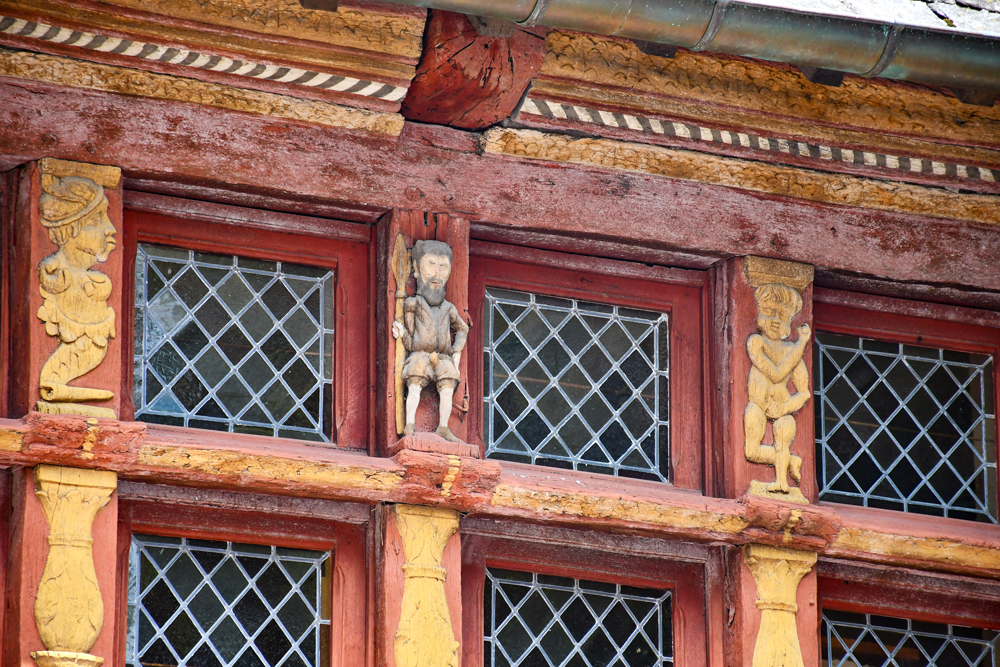
Explore Dinan - Maison de la Harpe © French Moments
Maison du Gisant
Next door, at number 13 rue de l'horloge, stands the Maison du Gisant. Restoration work on this 17th-century porch house uncovered a 14th-century recumbent statue. It is now on display outside.

Explore Dinan - Maison du Gisant © French Moments
Saint-Sauveur Basilica
(Basilique Saint-Sauveur)
The Basilica of Saint-Sauveur is the oldest and most ornately decorated church in Dinan.

Explore Dinan: Saint-Sauveur Basilica © French Moments
From Romanesque to Gothic
Part of the Romanesque west façade dates back to the 12th century.

The Romanesque portal of Saint-Sauveur Basilica © French Moments
From 1480 onwards, the church was transformed into a larger Gothic building with a nave and aisles lined with chapels, a long transept and a choir with five radiating chapels.
The Flamboyant Chevet
In 1507 work began rebuilding the chevet, which took almost 150 years. An openwork gallery, richly decorated with gargoyles, curly cabbages, mermaids and a fantastic bestiary, forms an elegant ornament where late Gothic meets Renaissance. The absence of buttresses reinforces the impression of elegance and lightness.
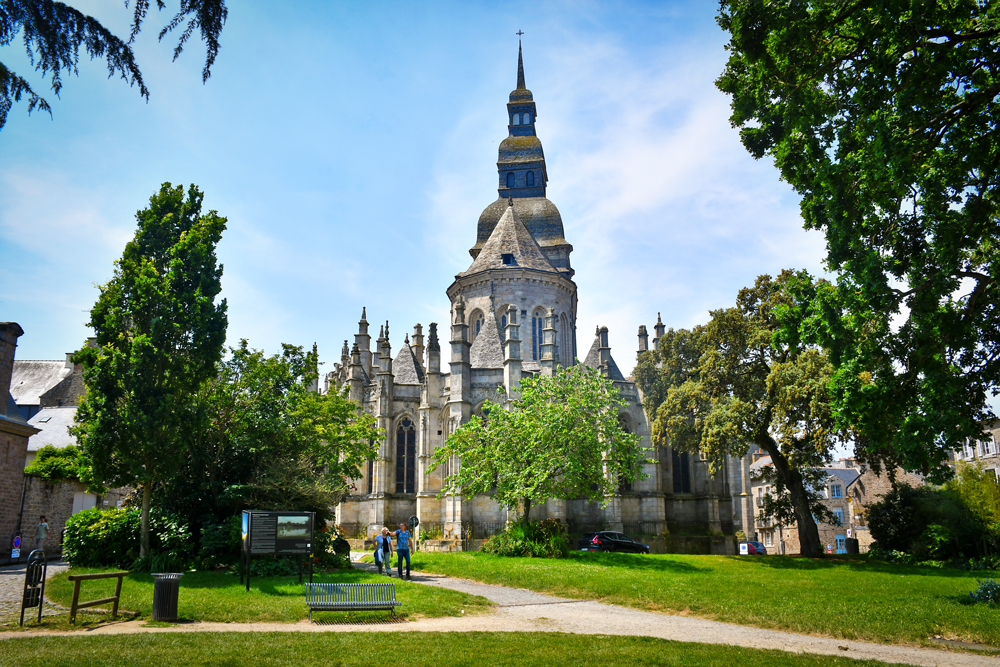
The chevet of Saint-Sauveur Basilica © French Moments
Wars of Religion and French Revolution
During the Wars of Religion, the church was ransacked, and most of the stained glass windows were destroyed. During the Revolution, the church became a temple of Reason, then a barn. It was returned to worship following the Concordat.
The sanctuary was restored during the Second Empire, with a new tympanum on the western façade. The State classified Saint-Sauveur as a historic monument in 1862, and the church was proclaimed a basilica in 1954.
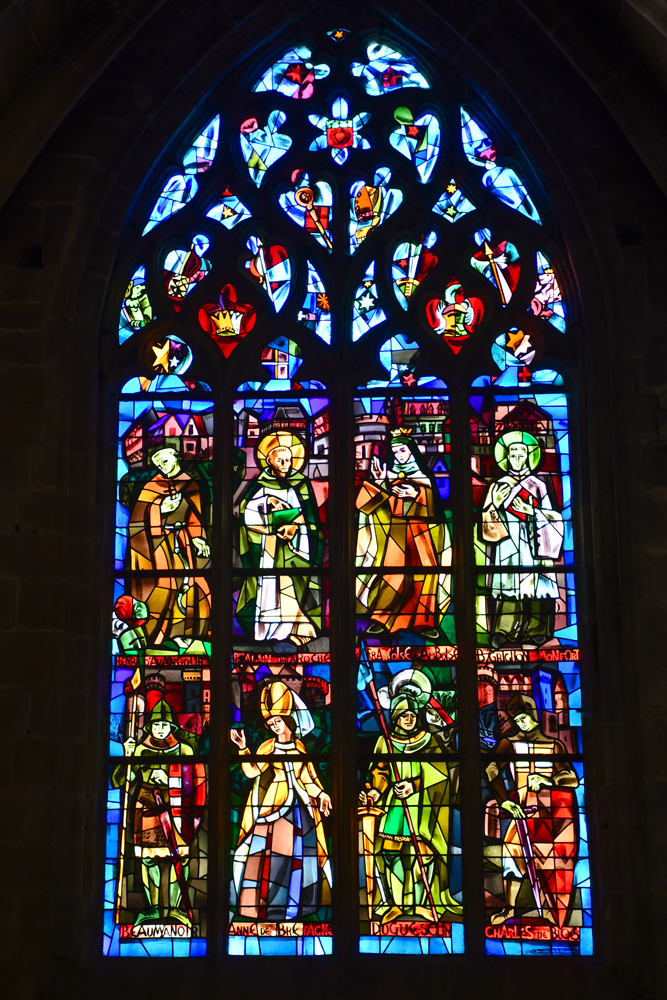
Stained-glass windows in Saint-Sauveur Basilica © French Moments
A striking asymmetry
As a result of its history, the building's asymmetry is striking, especially inside. The right-hand side is Romanesque, while the left-hand side, the choir and the transept are flamboyant.

The nave of Saint-Sauveur - left: Gothic and right: Romanesque © French Moments
Among the altars and altarpieces from the classical period, note the small monument containing Bertrand du Guesclin's heart in the transept's left wing.
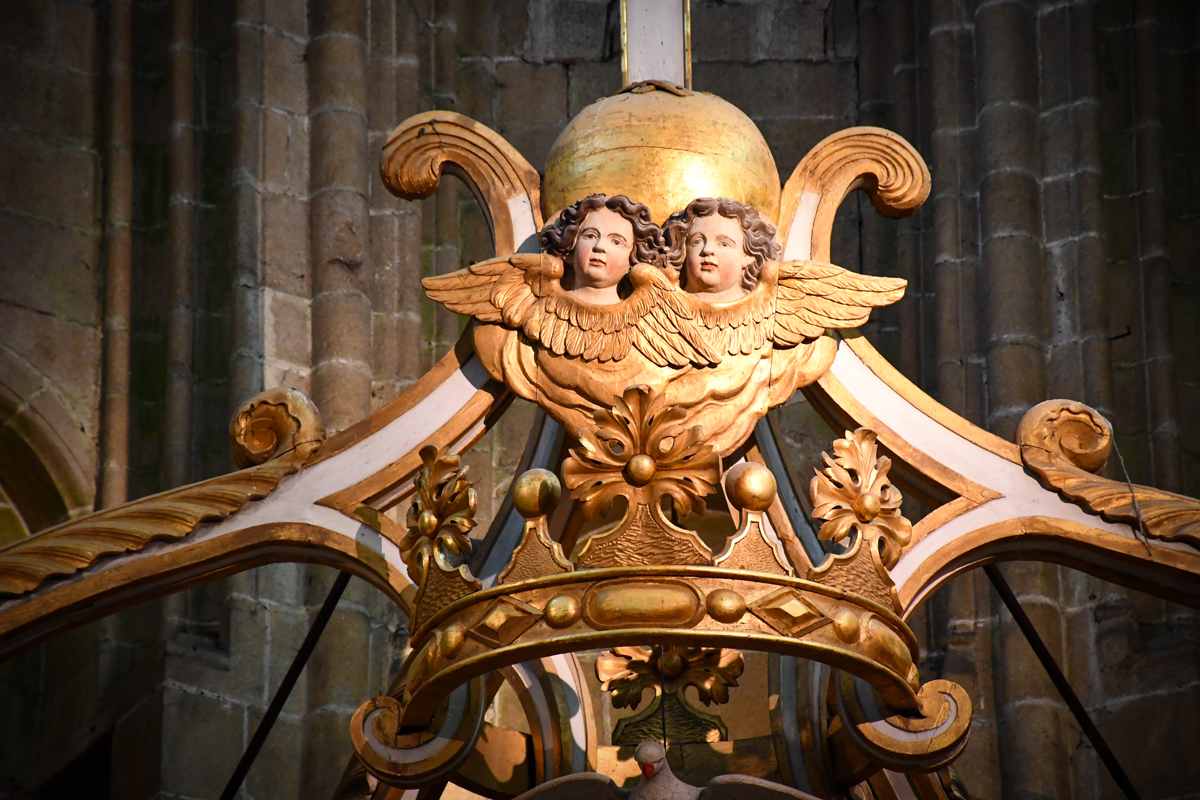
Detail of the canopy of Saint-Sauveur © French Moments
Learn more about the history and architecture of Saint-Sauveur Basilica on Patrimoine-Histoire [in French].
English Garden
(Jardin anglais)
Between the stunning Saint-Sauveur basilica, the Duchesse-Anne promenade on the ramparts and its magnificent panorama over the port and the viaduct, the English garden invites you to relax, stroll and contemplate.
![Dinan Jardin Anglais © chisloup - licence [CC BY 3.0] from Wikimedia Commons Explore Dinan - Jardin Anglais © chisloup - licence [CC BY 3.0] from Wikimedia Commons](https://frenchmoments.eu/wp-content/uploads/2023/07/Dinan-Jardin-Anglais-©-chisloup-licence-CC-BY-3.0-from-Wikimedia-Commons-scaled.jpg)
The English Garden © chisloup - licence [CC BY 3.0] from Wikimedia Commons
The origins of a garden
The public park was created in 1852 on an disused cemetery and inaugurated the following year under the name of Jardin de la Duchesse-Anne. At the end of the 19th century, it was renamed Jardin anglais to honour the British community, which had a strong presence in Dinan and was considered wealthy beyond the town's average.
The spectacular view
The garden is located on the upper part of the ramparts behind the Basilica of Saint Sauveur, offering a superb panoramic view of the Rance Valley (the port, the viaduct, the river) and the sea.
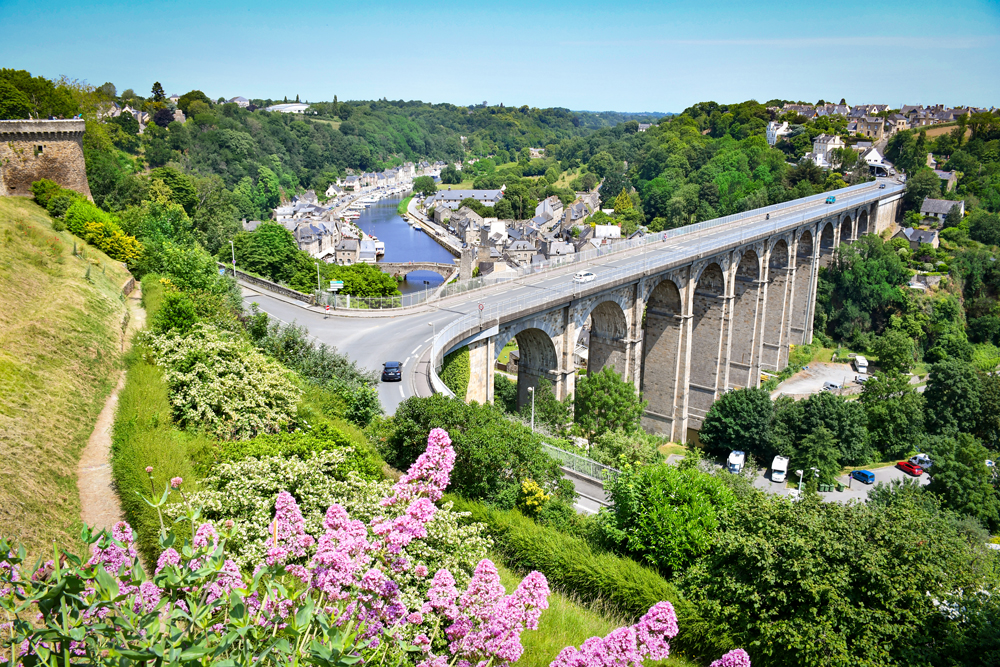
View of the viaduct from the English garden © French Moments
From the same spot, looking westwards, you can see the ramparts, the Jerzual Gate, the Governor's Tower, the Saint-Malo Gate and the Beaumanoir Tower.
Historical trees
The park is flower-filled all year round and features a pretty esplanade lined with trees over a hundred years old.
At 24 metres tall, the Ginkgo Biloba is the tallest in France. It is also one of the two oldest trees of this species.
The Himalayan Cedar is one of the largest in France and is also believed to be one of the ten giant Himalayan Cedars growing in Europe.
The winding path through the English garden leads down to the port of Dinan.
The Port and Lower Town
(Port et Ville Basse)
The port of Dinan is located below the upper town. This district, with its charming timber-framed houses following the course of the River Rance, is sometimes called the Ville Basse (Lower Town).
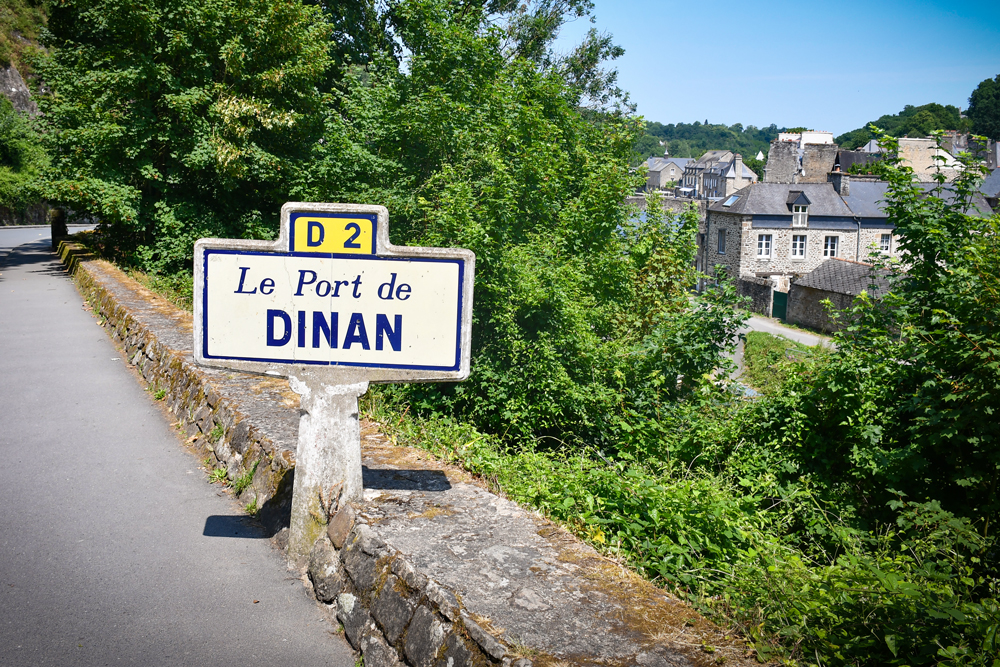
Explore Dinan - the Port © French Moments
Since the 12th century, the port of Dinan has been a vital stop-off point for Breton maritime trade. Linen and hemp cloth, manufactured in Dinan, was shipped all over Europe.
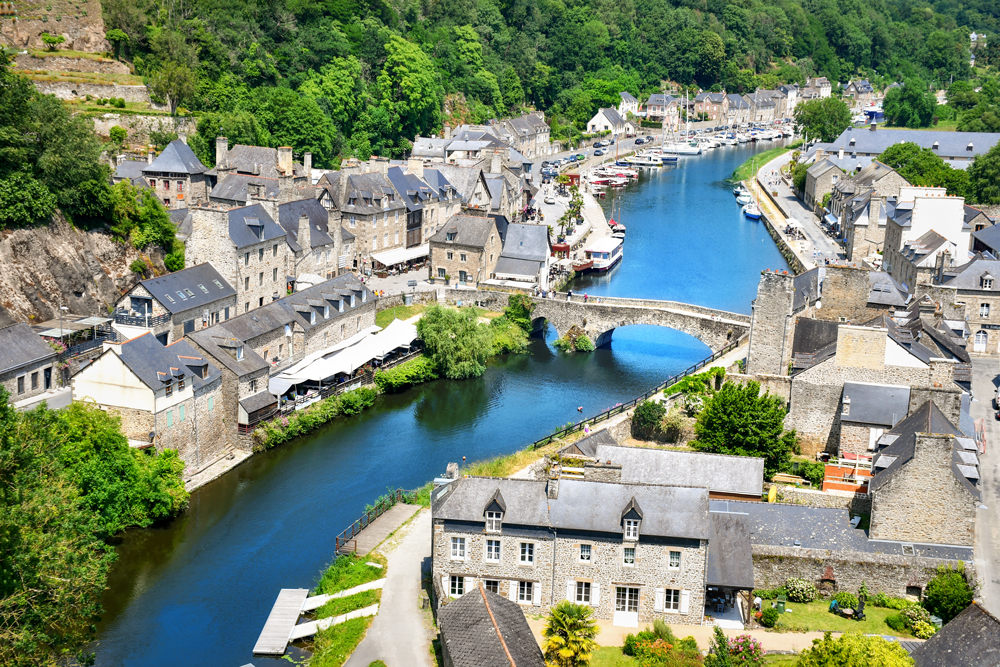
The historic port of Dinan and the old bridge © French Moments
From the old Bridge to the Jerzual Gate
The old bridge ("Pont gothique"), which marked the entrance to the town for centuries, already existed in the 11th century.

Explore Dinan - on the old bridge © French Moments
Boats sailed up the estuary to the port of Dinan, following the rhythm of the tides. Their goods were then brought up to the heart of the town through the Jerzual gateway.

Explore Dinan - Rue du Petit Fort © French Moments
The port was very active in the 18th century. It was home to many weavers who made sails for ships. They were transported to Saint-Malo via the Rance.
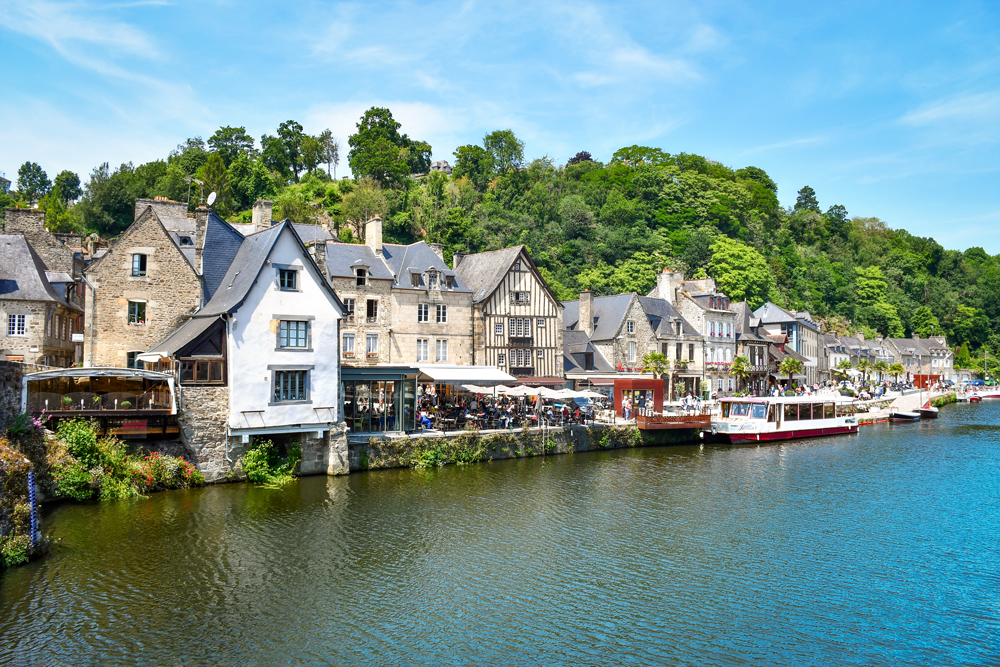
Explore Dinan: the harbour © French Moments
But from the 1850s onwards, port activities declined. A road viaduct was built in 1852, followed a few years later by the arrival of the railway in Dinan.
Activities by the Water
The port of Dinan offers various visitor activities: water sports, musical and cultural events, walks and cycle rides along the Rance, cruises and boat trips.

A cruise on the River Rance © French Moments
Several restaurants, crêperies, bars, lounges and shops keep the port lively throughout the day and night.
For a spectacular view of the harbour, cross the viaduct. It's a must for amateur photographers!

Explore Dinan: a view of the port from the viaduct © French Moments

Another view from the Viaduct © French Moments
Rue du Petit Fort and Rue Jerzual
(Rue du Petit Fort et Rue du Jerzual)
As in the past, you must take a steep road to reach the Upper Town. It has two names:
- Rue du Petit Fort, from the old bridge to the Jerzual gateway
- Rue du Jerzual, from the eponymous gate to the crossroads with Rue de la Poissonnerie, Rue de la lainerie and Rue de l'école in the Upper Town.
These two streets are lined with beautifully restored old houses, some timber-framed with corbelling.
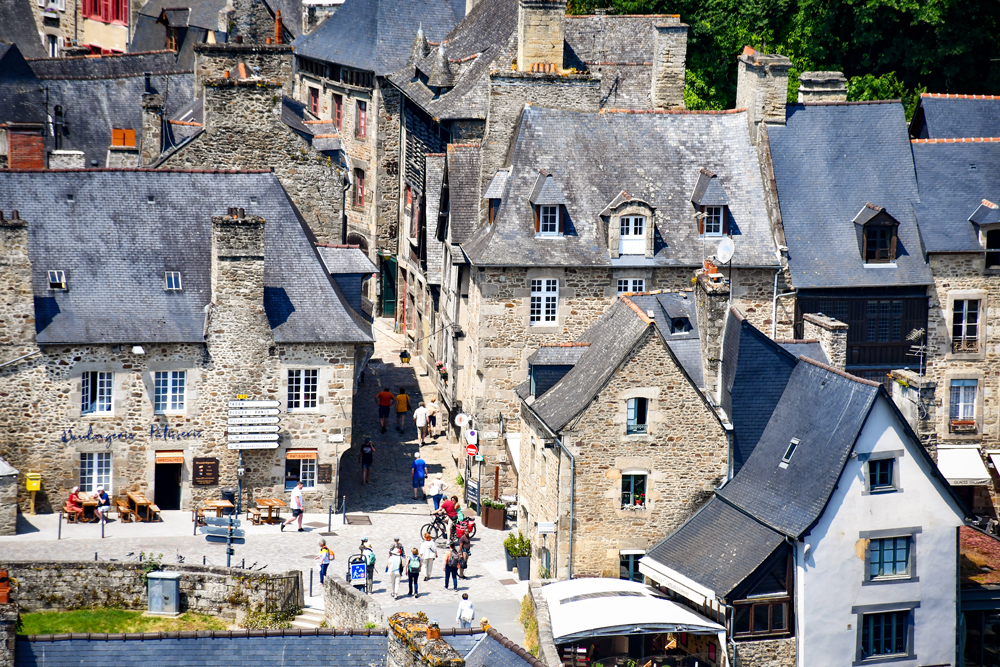
Explore Dinan - Rue du Petit Fort © French Moments
Rue du Petit Fort
Rue du Petit Fort is arguably the most picturesque street in Dinan. The steep paved lane is lined with stone and half-timbered houses dating back to the 14th to 16th centuries.
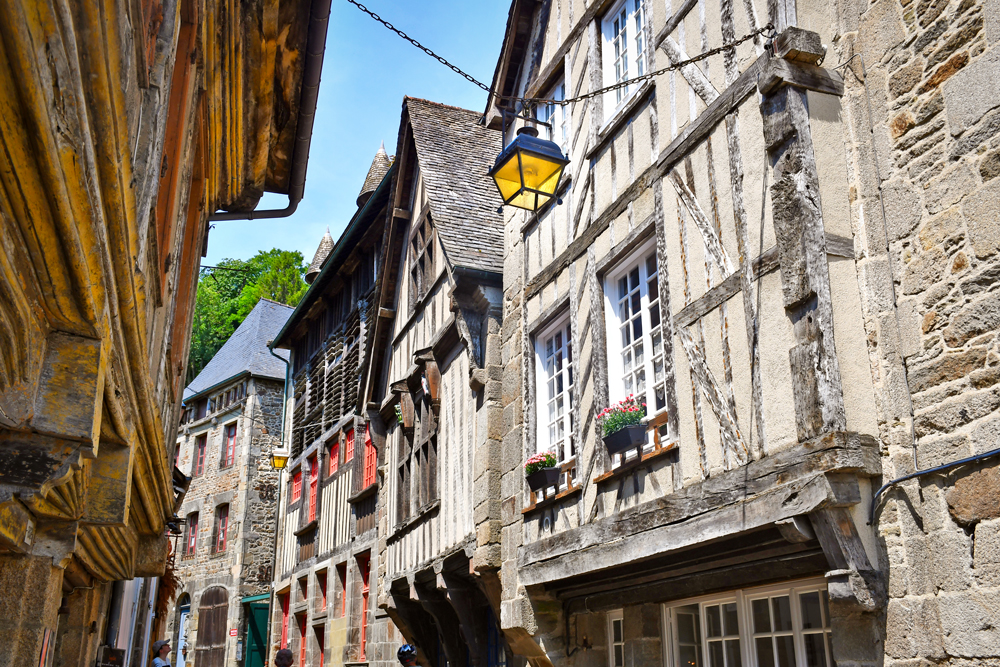
Explore Dinan: Rue du Petit Fort © French Moments

Rue du Petit Fort © French Moments
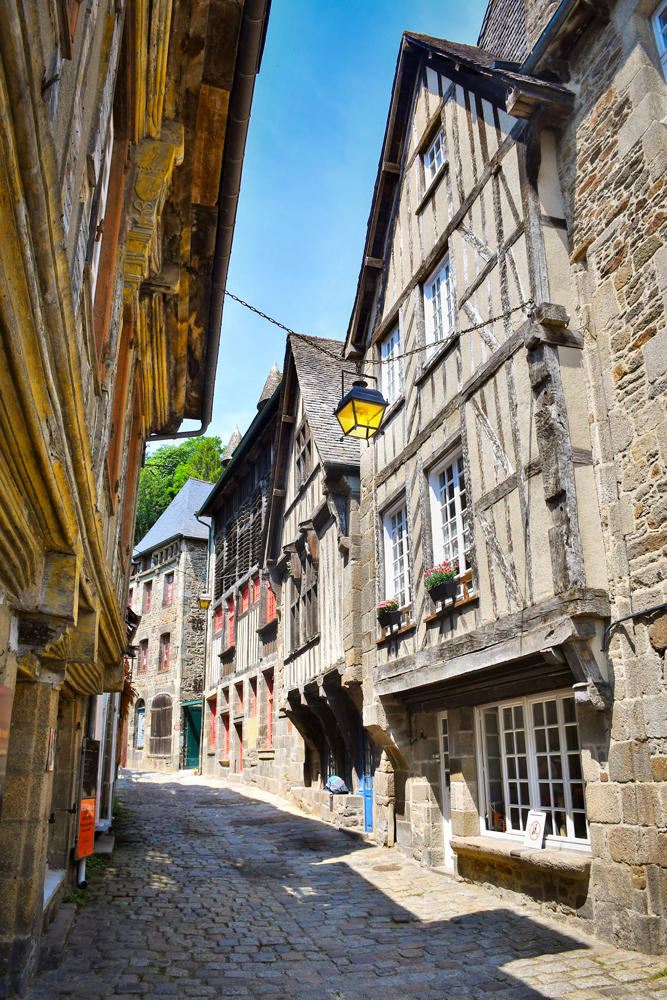
Rue du Petit Fort © French Moments
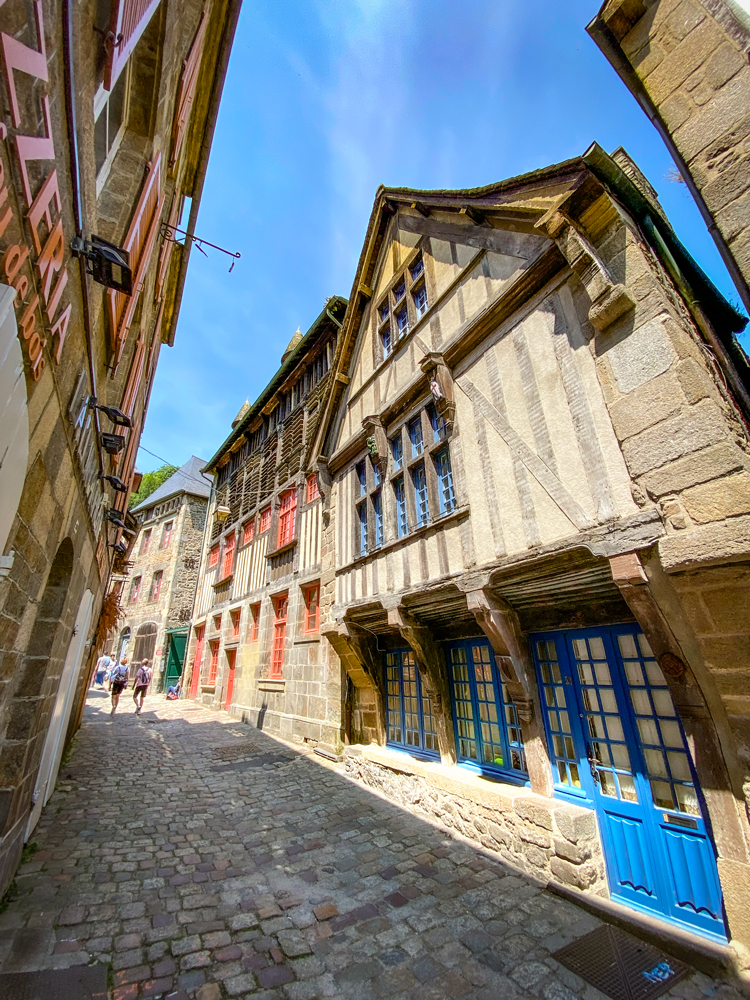
Explore Dinan - Rue du Petit Fort © French Moments
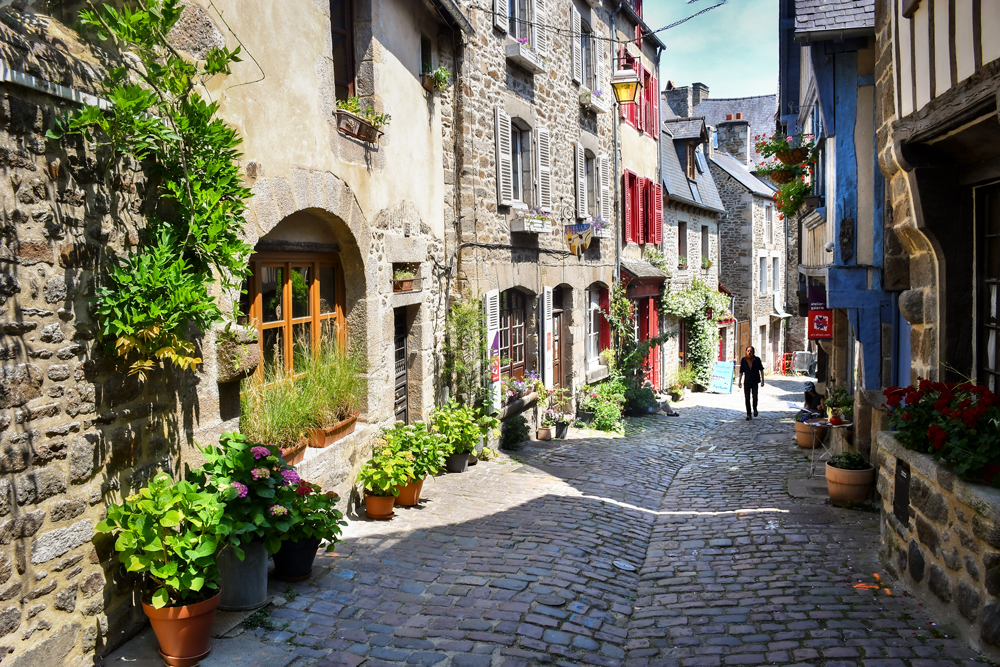
Explore Dinan - Rue du Petit Fort © French Moments
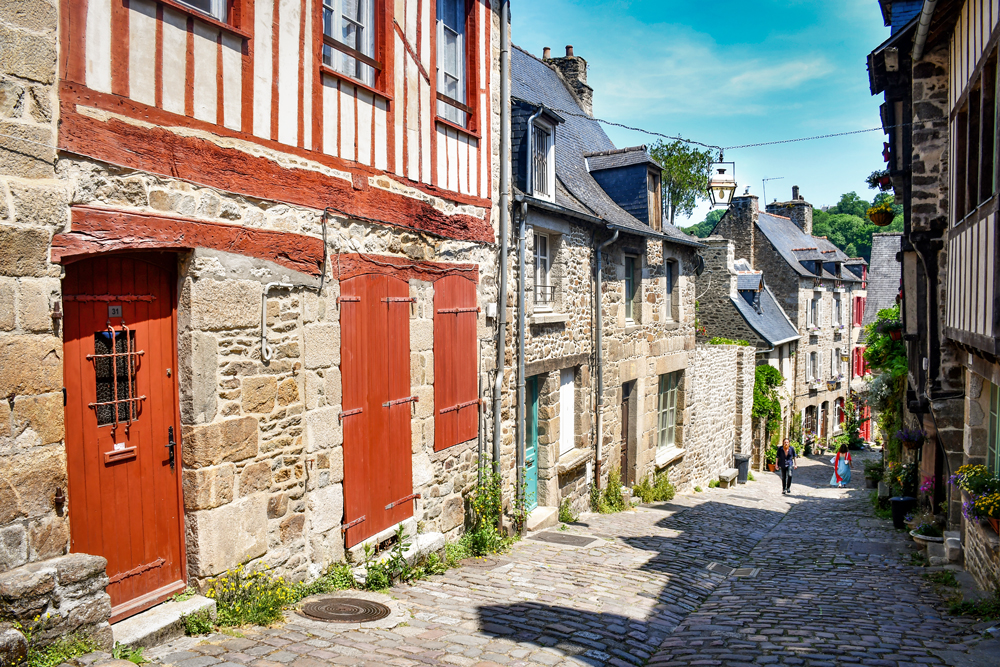
Rue du Petit Fort © French Moments
Note the famous Maison du Gouverneur (24 rue du Petit Fort), an old 15th-century timber-framed house where a weaver worked.
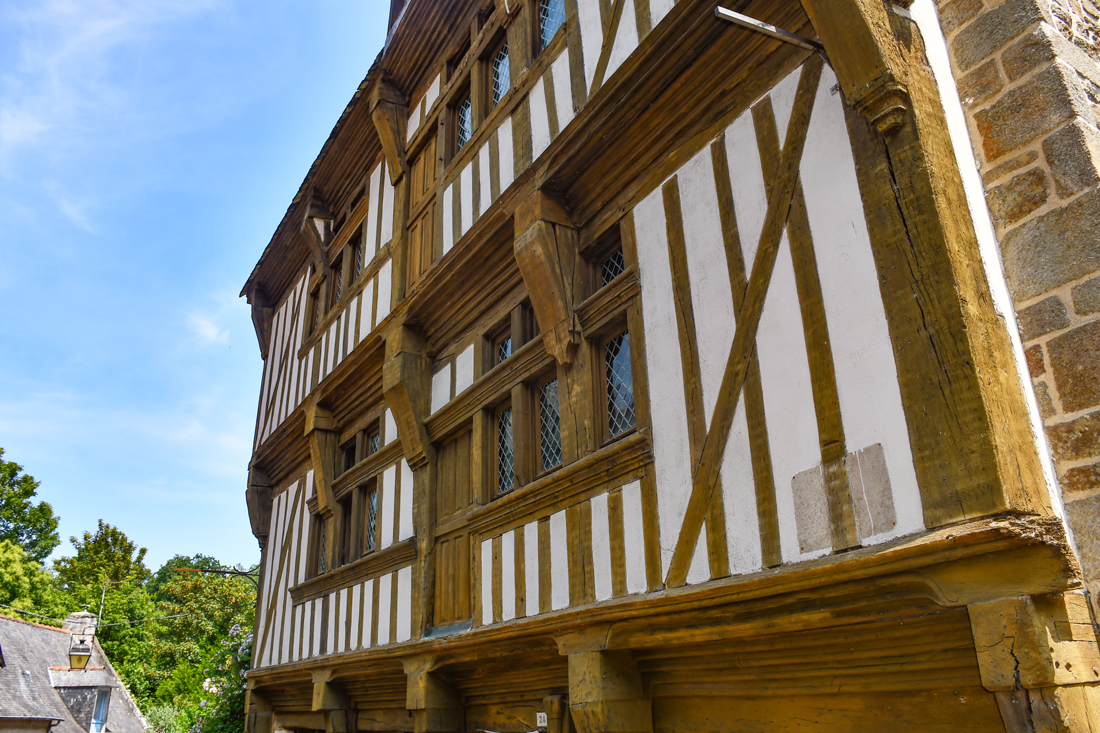
Explore Dinan - Maison du Gouverneur © French Moments
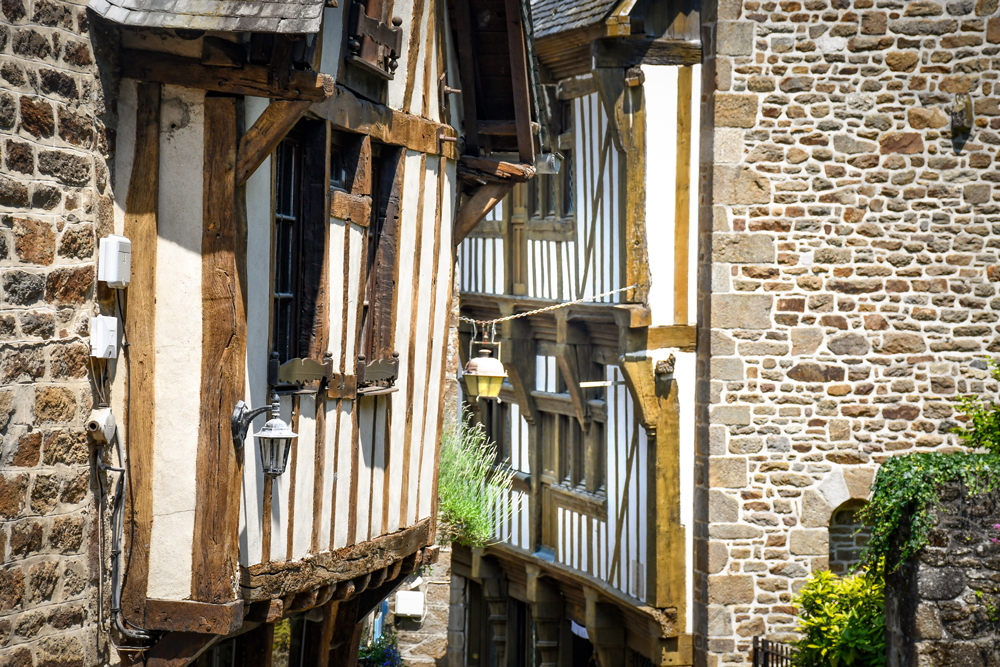
Rue du Petit Fort and Maison du Gouverneur on the right © French Moments
Rue du Jerzual
Halfway up the hill, you enter the Upper Town through the city gate of Porte du Jerzual, dating from the early 14th century.
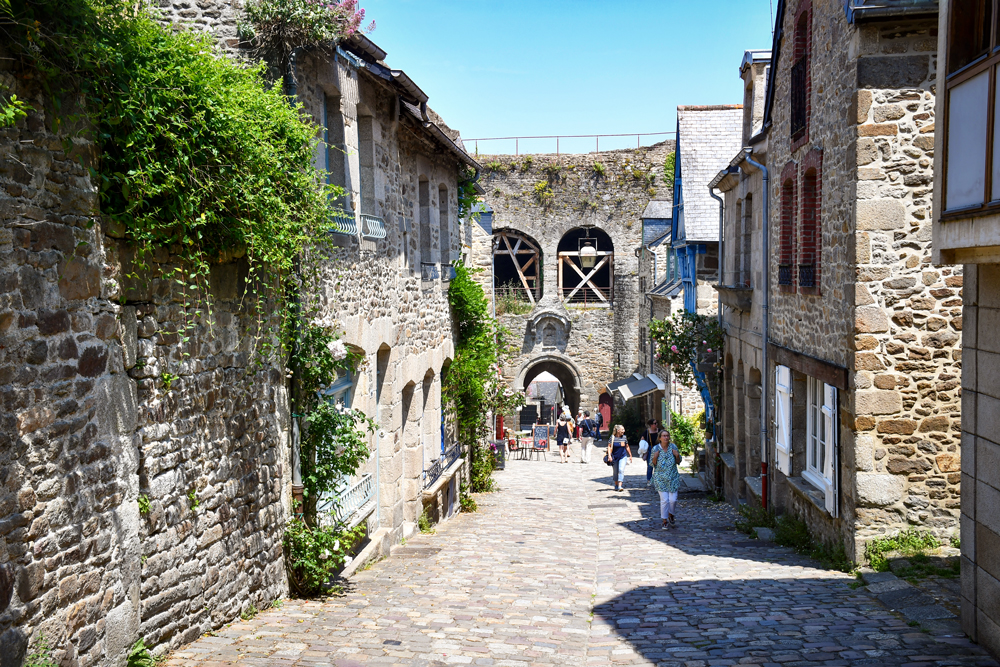
Explore Dinan - Porte du Jerzual © French Moments
Rue du Jerzual was once the street of artisans. It is lined with shops dating from the 15th and 16th centuries, still home to around a dozen artisans and artists.
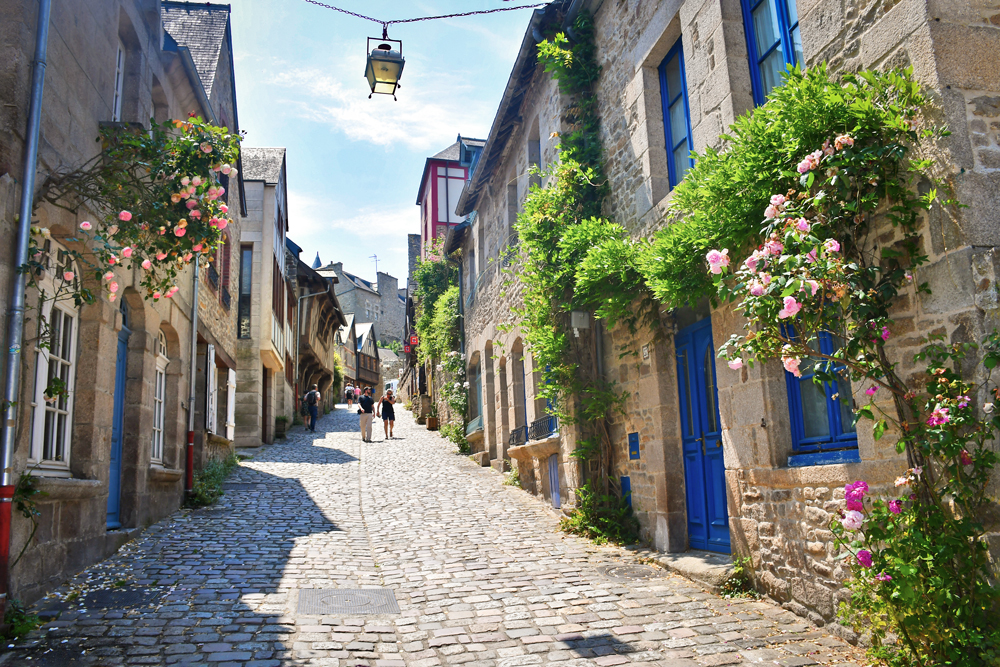
The steep Rue du Jerzual © French Moments
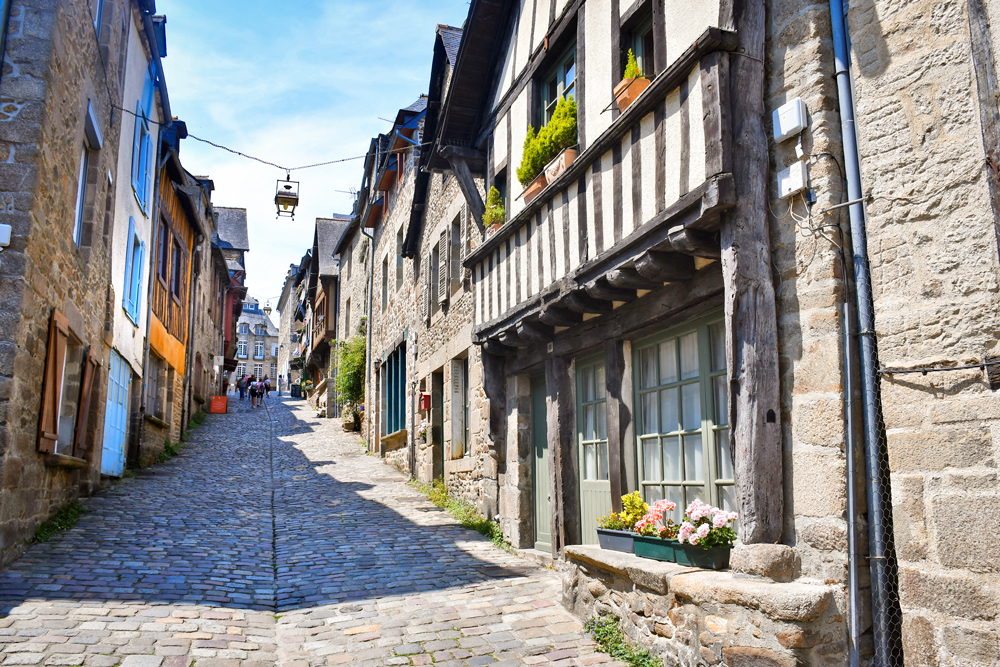
Explore Dinan - Rue du Jerzual © French Moments
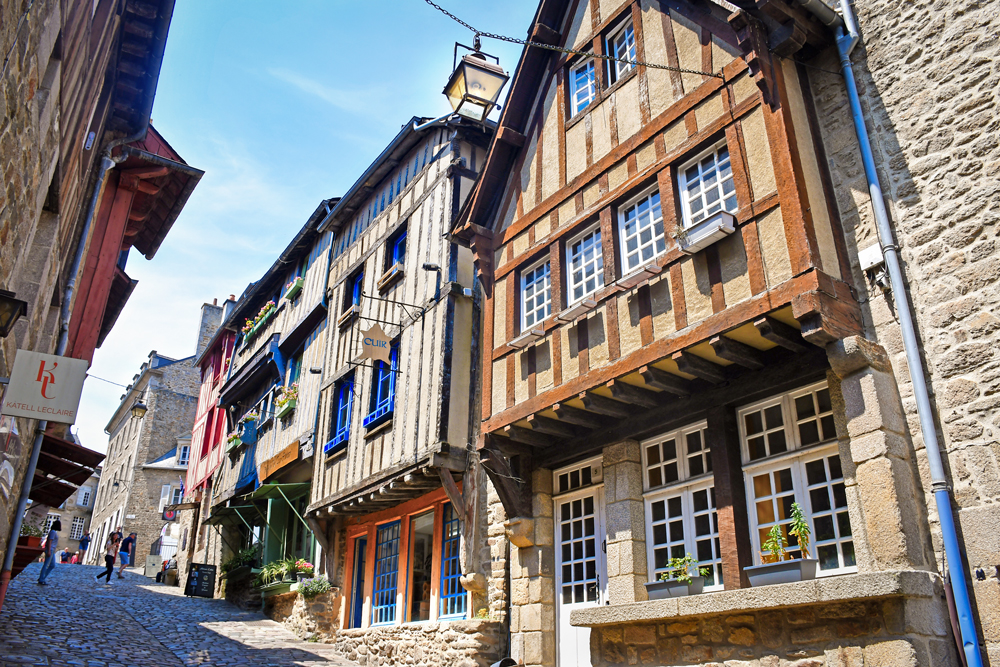
Half-timbered houses in Rue du Jerzual © French Moments
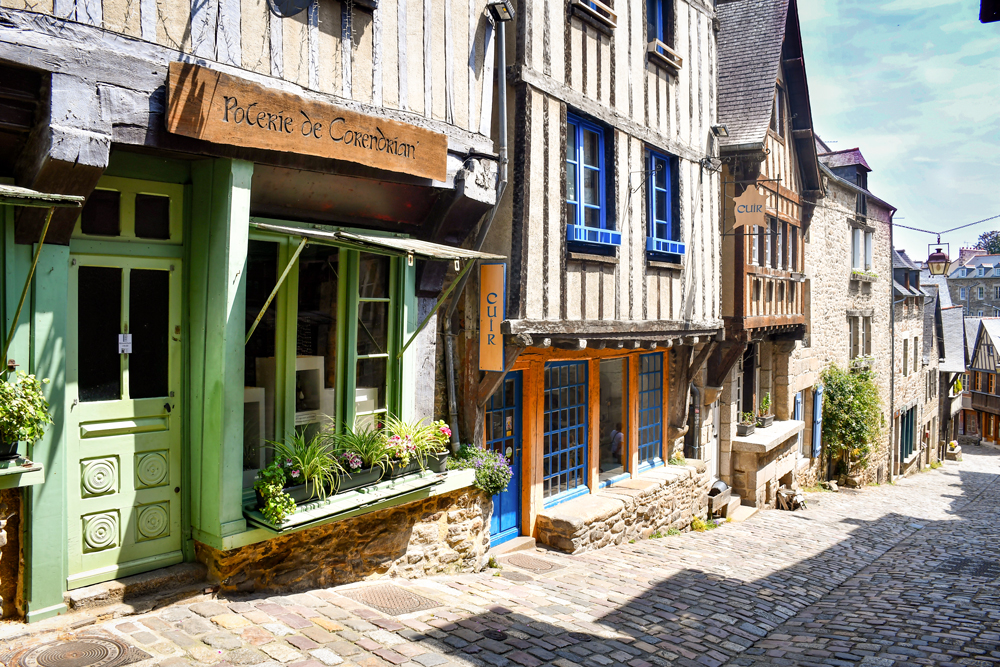
Old workshops in Rue du Jerzual © French Moments
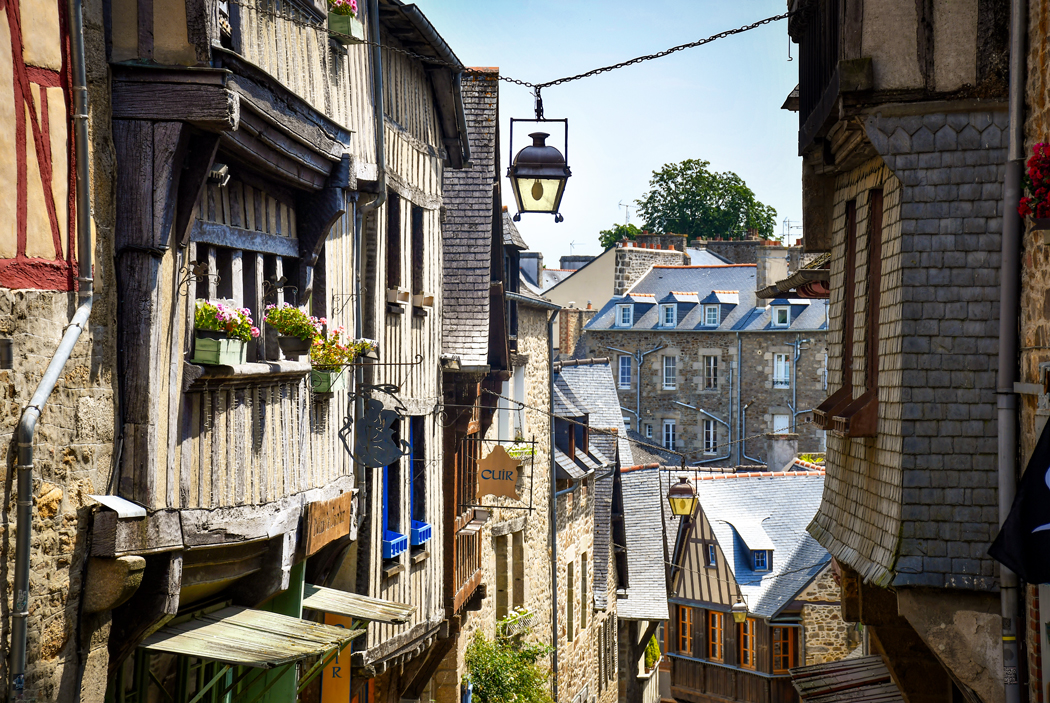
Explore Dinan: Rue du Jerzual © French Moments
A little anecdote: many houses in this formerly popular district were sold to the English in the 1980s and 1990s, causing property prices to rise.
Tip for your visit!
We visited the street from the port to the Upper Town. The cobbled street has a steep gradient of up to 33%, and it's not unusual to see people gasping for breath! Therefore, the ascent (or descent) is not very suitable for visitors with reduced mobility or wheelchairs.

Explore Dinan - Rue du Petit Fort © French Moments
Saint-Magloire Abbey in Léhon
(Abbaye Saint-Magloire de Léhon)
Saint-Magloire Abbey lies 2 km south of Dinan, upstream from the River Rance. The monument is nestled at the bottom of a valley, nestled in a meander of the Rance and protected by a rocky spur on which stands a medieval fortress.
It is a former Benedictine monastery located in the village of Léhon, a former commune that merged with Dinan in 2018.
![Abbaye Saint-Magloire © Guillaume CABIOC'H - licence [CC BY-SA 3.0] from Wikimedia Commons Abbaye Saint-Magloire © Guillaume CABIOC'H - licence [CC BY-SA 3.0] from Wikimedia Commons](https://frenchmoments.eu/wp-content/uploads/2023/07/Abbaye-Saint-Magloire-©-Guillaume-CABIOCH-licence-CC-BY-SA-3.0-from-Wikimedia-Commons-scaled.jpg)
Saint-Magloire Abbey church © Guillaume CABIOC'H - licence [CC BY-SA 3.0] from Wikimedia Commons
A bit of history
The abbey was founded in the 9th century by Nominoë, the first Duke of Brittany.
In 1093, King Philip I of France signed a charter declaring the submission of Saint-Magloire Abbey to that of Marmoutier Abbey, near Tours in the Loire Valley.
The abbey considerably increased its revenues during the 11th and 13th centuries, with possessions in the dioceses of Saint-Malo, Dol, Saint-Brieuc, Tréguier, Saint-Pol, Avranches and even in England.
This enabled the abbey to reconstruct under the impetus of Peter I, Duke of Brittany.
During the French Revolution, Joseph Bullourde acquired the abbey and lived there for thirty years. In 1885, restoration work began with the blessing of the foundation stone. The conventual buildings were not restored until 1956.
Things to see in the abbey
During your visit, admire
- The abbey church (with vaults 28 metres high)
- The cloister
- The conventional buildings
- The refectory
- The gardens
![Abbaye Saint-Magloire Léhon Cloister © Nono314 - licence [CC BY-SA 4.0] from Wikimedia Commons Abbaye Saint-Magloire Léhon Cloister © Nono314 - licence [CC BY-SA 4.0] from Wikimedia Commons](https://frenchmoments.eu/wp-content/uploads/2023/07/Abbaye-Saint-Magloire-Lehon-Cloister-©-Nono314-licence-CC-BY-SA-4.0-from-Wikimedia-Commons-scaled.jpg)
Cloister of Saint-Magloire Abbey in Léhon Cloister © Nono314 - licence [CC BY-SA 4.0] from Wikimedia Commons
The village of Léhon
While visiting the abbey, stroll through the old village of Léhon, with its typical little stone cottages in the Rue du Bourg, the little bridge over the River Rance (17th century) and the remains of its fortified castle.
![Léhon © Rundvald - licence [CC BY-SA 4.0] from Wikimedia Commons Léhon © Rundvald - licence [CC BY-SA 4.0] from Wikimedia Commons](https://frenchmoments.eu/wp-content/uploads/2023/07/Lehon-©-Rundvald-licence-CC-BY-SA-4.0-from-Wikimedia-Commons-scaled.jpg)
The old bridge on the Rance in Léhon © Rundvald - licence [CC BY-SA 4.0] from Wikimedia Commons
A conclusion to our Dinan visit
In conclusion, Dinan in Brittany offers a remarkable journey through time with its various landmarks and historical sites.
From the grandeur of Dinan Castle and the impressive ramparts surrounding the town to the iconic Clock Tower and the enchanting Saint-Malo Church, each landmark tells a story of Dinan's rich past.
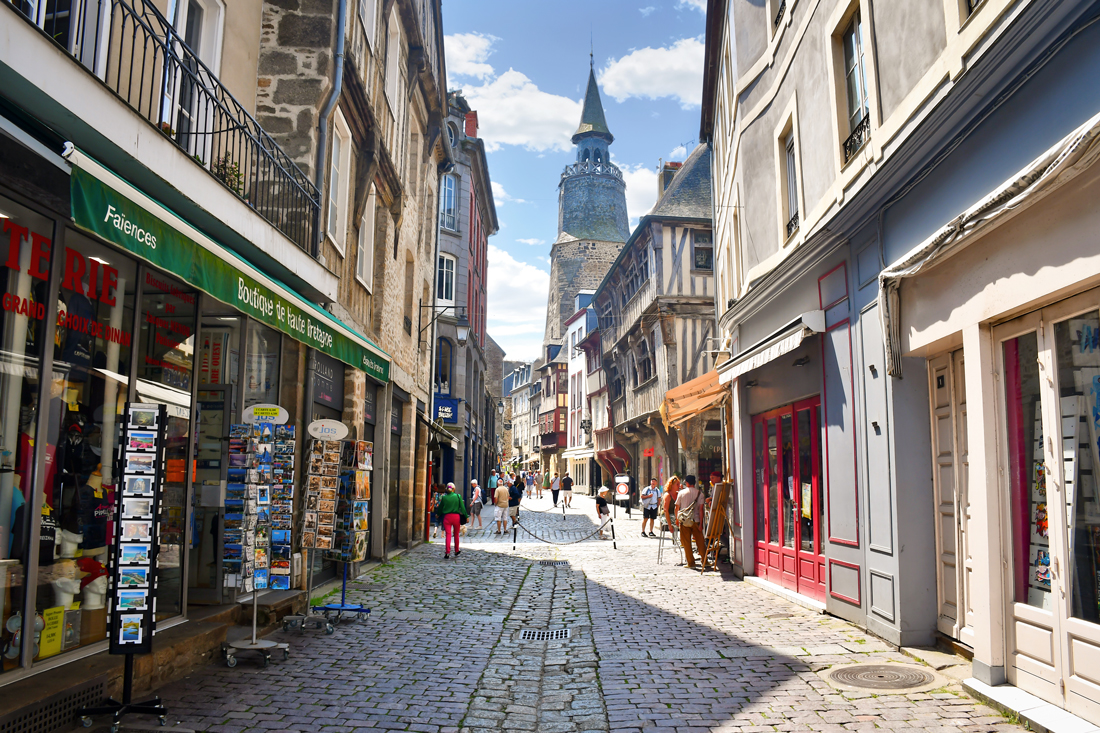
Explore Dinan - Rue de l'Horloge © French Moments
We were thrilled to see the picturesque half-timbered houses, the serene Saint-Sauveur Basilica, and the tranquillity of the English Garden which provided a glimpse into the city's architectural and natural beauty.
We'll have fond memories exploring the vibrant Port and Lower Town, wandering through the charming streets of Rue du Jerzual and Rue du Petit Fort, and visiting the historic Saint-Magloire Abbey in Léhon.
Whether you are a history enthusiast, an architecture lover, or simply seeking a unique travel experience, to explore Dinan's top landmarks promises to leave an indelible impression and create lasting memories.
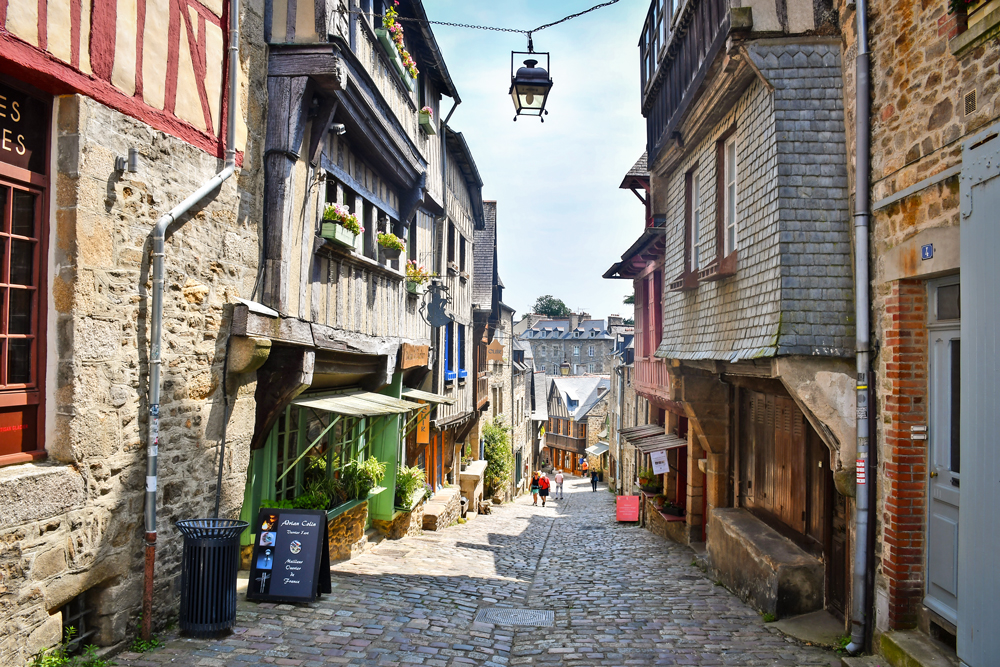
Explore Dinan - Rue du Jerzual © French Moments
Share the wonders of Dinan!
Share the wonders of Dinan with your friends and followers on Facebook and Twitter, and inspire them to embark on their journey to this Breton gem.
Remember to pin the accompanying picture on Pinterest to save and share the visual beauty of Dinan.
